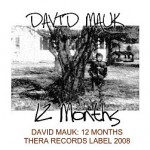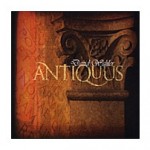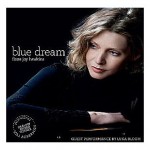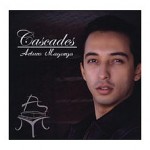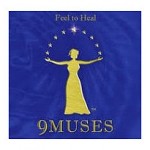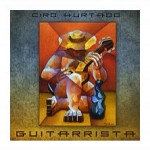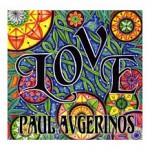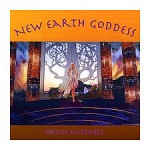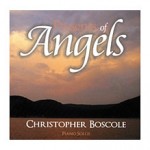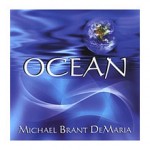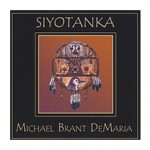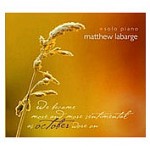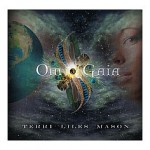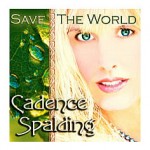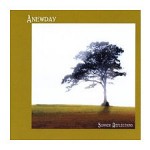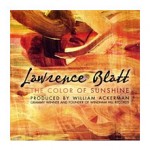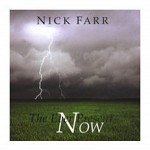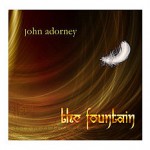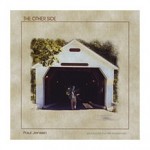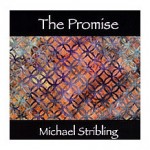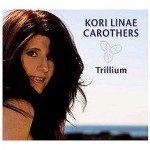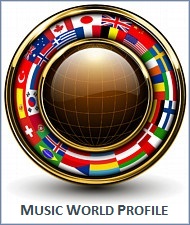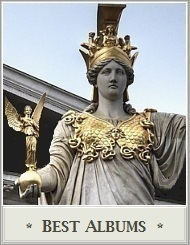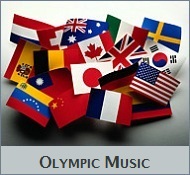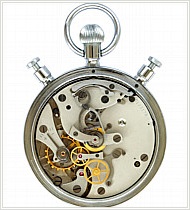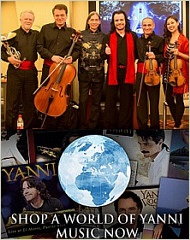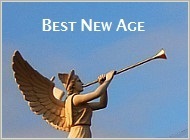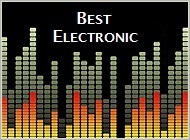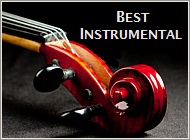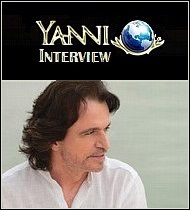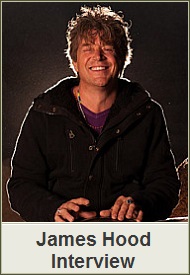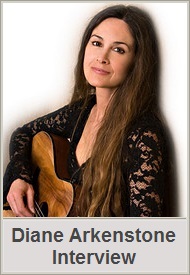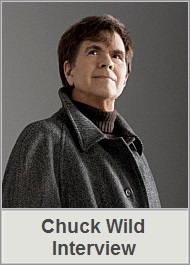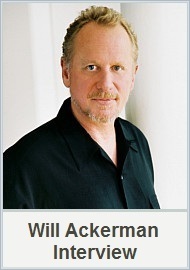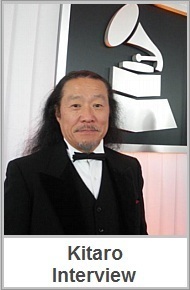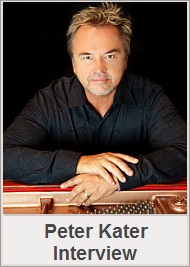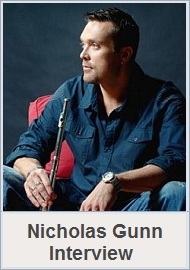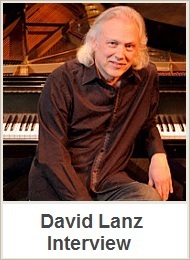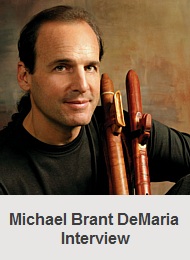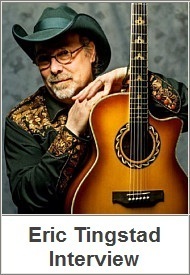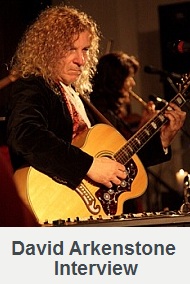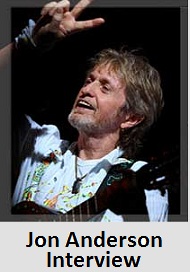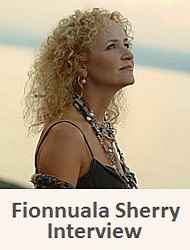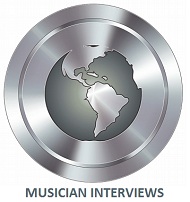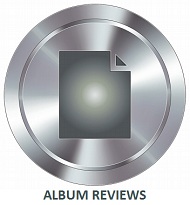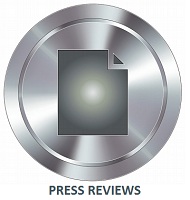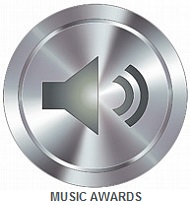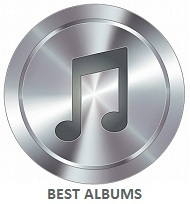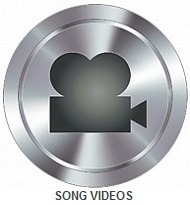Archive for the ‘Top 10 Radio Charts’ Category

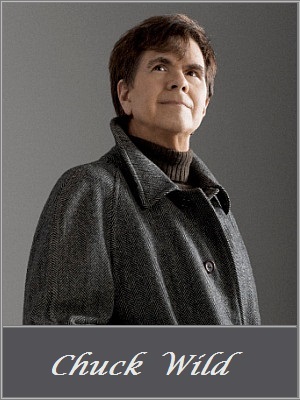 New Age Music World interview host and publicist John P. Olsen had an opportunity to interview songwriter, recording artist, and Liquid Mind Musical Healthcare® experience developer Chuck Wild.
New Age Music World interview host and publicist John P. Olsen had an opportunity to interview songwriter, recording artist, and Liquid Mind Musical Healthcare® experience developer Chuck Wild.
John P. Olsen: Thank you for accepting my interview invitation Chuck. It’s a privilege to host your newest interview in 2013!
Chuck Wild: Hi John, thanks for the insightful questions, I appreciate the opportunity to talk about my journey in musical healthcare.
John: My admiration for your work began when you were a member of the phenomenal new wave pop band Missing Persons, and years later when you transitioned to the highly successful artist title Liquid Mind. Let’s begin with your earliest experiences as a musician Chuck. How did your music career begin prior to joining Missing Persons?
Chuck Wild: I grew up in Kansas City, Missouri, and began playing piano at age four. I was diagnosed with a congenital hip problem (which was completely resolved by age eight), but back in the 1950’s the only cure was to remain off my feet for a full year. My parents hired a wonderful caregiver for me for that year, and she used to carry me down to the piano every morning and teach me how to play.
By the age of five I was permitted to walk with a brace for about a year, but the piano already had me hooked. By age six, I was mobile, and my heart’s desire was to sit behind the church organist at our church, so my folks arranged for me to spend all morning most Sundays with our organist, Gladys Hamilton Combs. After services, Gladys would sometimes let me play the giant Kilgen organ which had 39 ranks and five keyboards.
My formal music training started as member of the kids’ choir at church and also in grade school, where daily music was part of the curriculum. At age 6, I began studying classical piano privately with various teachers until age 16. During high school, I played organ for youth services every Sunday for about four years, where I gained lots of experience improvising and playing the type of meditational music that eventually became Liquid Mind. I also sang in an award winning male octet, and played piano for our high school concert choir at times. Though I have a degree in Business Administration, I studied and performed music all through college as well.
After graduating from college I served four years in the Navy. The captain of our ship had sung in the famous Robert Shaw Chorale, and when he found out I was a piano player, we made the rounds together of Naval and local clubs all over the Pacific. He would sing, I would accompany on some of the most colorful pianos I’ve ever played on, and in some of the most exotic places I’ve ever been. After serving in the Navy, I went on the road with various bands for 11 years, “paying my dues” as the saying goes. I played in almost a dozen such show and cover bands prior to coming to LA (1979) and joining the band Missing Persons in 1980.
John: What factors led to your decision to begin a career as a musician?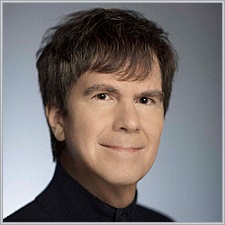
Chuck Wild: The very first water color I painted as a child was a picture of me sitting in front of a large pipe organ, so perhaps there was some early predestination about the career. I remember telling my parents when I returned home for the Navy that I wanted to be a musician. My folks, realizing that the life of a musician can be very challenging, were not encouraging, and suggested I might try it for just a couple of years. Two years has turned into 40 years now…
I wish I could say I had a grand design back then, but the truth at that point in time was much shallower. I just enjoyed being on the road in the many bands, and did learn a lot about life and music. The “road” is also the “tuition” a new musician pays for better musicianship. There have been many ups and downs, I remember in the early days sleeping in the back of my van with a pillow on the pedal board of my old Hammond B3 organ. Still, they were generally happy days, as friends were generous with their couches when our bands ran out of money!
John: Missing Persons became a phenomenal chart topping band with international success with hit albums and songs like Walking In L.A., Words, Destination Unknown, & Mental Hopscotch, just to name a few. In addition to massive radio airtime, Missing Persons was a favorite group played nearly non-stop during the early years of an American television channel and cultural game-changer named Music Television, otherwise known as MTV. A lot of people have varied tastes in music like me so would you please tell us all about your music career while you were with the popular Capitol Records group Missing Persons?
Chuck Wild: On September 22, 1980, I received a call from singer Dale Bozzio, asking me if I’d like to audition for their band. Dale had found me through the Musicians Contact Service in Hollywood. I said “no” as it was my birthday, but maybe another time. Dale said, “Oh, since it’s your birthday, if you’ll come audition, we’ll buy you dinner after the audition!” I agreed, and went to the audition, and they bought me a wonderful Italian birthday dinner.
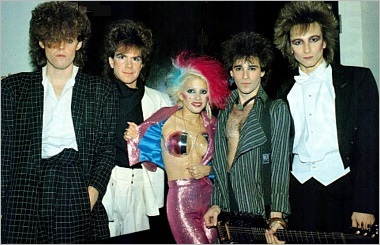 However, when I arrived for the audition, I found out that they needed a keyboard player who had the coordination to play left hand (very fast) bass parts in odd time signatures, while at the same time playing keyboard parts in the right hand in different time signatures!
However, when I arrived for the audition, I found out that they needed a keyboard player who had the coordination to play left hand (very fast) bass parts in odd time signatures, while at the same time playing keyboard parts in the right hand in different time signatures!
I had no problem playing either hand alone, but had never played keyboard bass & keyboard parts at the same time. So, I failed the audition but we still had a fun birthday dinner that night. During the course of the audition, they played four songs for me which they’d recorded with producer Ken Scott (The Beatles, David Bowie, Supertramp) up at Frank Zappa’s house.
I really loved the tracks they’d played for me, so the next day I made the decision to get up at 5 am every morning and practice the new technique of left hand bass and right hand keys, in odd time signatures, first in slow motion, then very fast, until I was proficient enough to audition again. After a couple of weeks I asked for another audition, and this time got the job.
That turned into a whirlwind of activity – Missing Persons started playing live in late 1980 and we sold out 40 shows in a row in Los Angeles prior to getting signed, primarily because the other 3 members of the band had worked extensively with Frank Zappa, who had a big Los Angeles following. I must say it was an extraordinary experience. Terry Bozzio, arguably still one of the greatest living drummers, Warren Cuccurullo, an amazingly creative guitarist who went on to play with Duran Duran for twelve years, and Dale Bozzio, a fashion leader long before Lady Gaga and Madonna, and myself played gig after gig for those first 18 months.
In 1981, once the band had some label interest, we were joined by the talented bassist/composer Patrick O’Hearn, who is a wonderful artist in his own right. Although we were initially rejected by some labels, our manager/producer Ken Scott persisted, and decided it would benefit us to tour in Canada, and then play some dates in New York City area to prove we could attract fans outside of California. Capitol Records staff in NY heard us, on that trip, where we played three sold out shows, the Peppermint Lounge, the Ritz, and a live concert recording for the venerable rock station, WPLR-FM Long Island. When we returned to Los Angeles, Capitol Records signed the group.
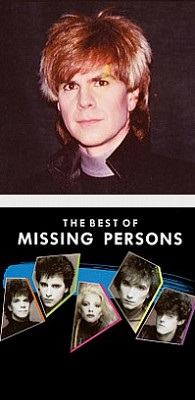 One of my fondest memories from those days was taking a copy of our 4-song EP (phonograph record in those days) to radio station KROQ in 1980. It was very difficult to get music to KROQ, so I waited in the parking lot after everyone left, and as one of the employees was leaving, I propped open the back door with a twig. When the lot had cleared out, I went in and gave our EP to the on-air DJ, Freddie Snakeskin who happened to be program director for KROQ. About 2 weeks later we were riding in a car to rehearsal and heard our song Mental Hopscotch on the air. That song went on to become #1 song of the year in LA before we were even signed. From that point on, our Los Angeles gigs were often introduced by Dusty Street, Jed the Fish, and Freddy Snakeskin (program director for KROQ).
One of my fondest memories from those days was taking a copy of our 4-song EP (phonograph record in those days) to radio station KROQ in 1980. It was very difficult to get music to KROQ, so I waited in the parking lot after everyone left, and as one of the employees was leaving, I propped open the back door with a twig. When the lot had cleared out, I went in and gave our EP to the on-air DJ, Freddie Snakeskin who happened to be program director for KROQ. About 2 weeks later we were riding in a car to rehearsal and heard our song Mental Hopscotch on the air. That song went on to become #1 song of the year in LA before we were even signed. From that point on, our Los Angeles gigs were often introduced by Dusty Street, Jed the Fish, and Freddy Snakeskin (program director for KROQ).
During that same period, Les Garland, an A & R person from Atlantic Records had become a fan of the band, and though Atlantic didn’t sign us, Les went on to become Senior VP of the new Music Television station, MTV, and once we were signed to Capitol, we soon had six videos in heavy rotation, which helped enormously.
John: Fascinating Chuck! In addition to being a band member for Missing Persons you were a session musician on albums for many music celebrities including Paula Abdul, The Pointer Sisters, Frank Zappa and the late Michael Jackson to name a few. Would you like to tell of your experiences while working with famous celebrity artists?
Chuck Wild: In the mid 1970’s I was playing in a blues band in Zebulon, NC, and actually lived in a studio called Mega Sound Studios in nearby Bailey, NC. I traded a place to live in return for playing sessions and keeping the place clean. My initial training in recording arts came from a wonderful engineer by the name of Richard Royal, who was one of the studio owners. So I got a lot of early studio experience in those days. As I mentioned, Missing Persons’ producer on our first album was Ken Scott, and I sat behind Ken whenever possible to learn as much as I could. Missing Persons’ second full-length album, Rhyme and Reason, was produced by legendary five time Grammy-winning engineer/producer Bruce Swedien who had been Quincy Jones’ engineer for over 35 years, including having engineered Thriller and most of the other Michael Jackson albums. Over the years Bruce and his wonderful wife Bea have been mentors for me, and were instrumental in encouraging me to begin the Liquid Mind® series.
In 1987 I co-wrote (and played on) a song for the Pointer Sisters called Say the Word with Grammy-winning producer Glen Ballard and the late great songwriter, Marti Sharron. Glen started calling me for some sessions, including a song on Paula Abdul’s debut album. My longest stint in the studio began when Bruce Swedien called me in 1994 to ask if I’d like to program sounds for Michael Jackson’s HIStory album. I said yes, and I continued to create soundscapes, sounds, and do some percussion programming for Michael between 1994 and 1998. The money I earned from Michael those years helped me to start Chuck Wild Records in the early days, in order to distribute Liquid Mind. Suzanne Doucet, a friend and wonderful New Age artist in her own right, was instrumental as a consultant in setting up my label and distribution, and in guiding me through the trials of running a small label.
John: When you were signed as a staff songwriter to Lorimar Telepictures and Warner/Chappell Music, and also in the years to follow, you’ve composed over 125 songs, scores, and compositions for the television and film industry. Who are some of the artists who’ve recorded your songs?
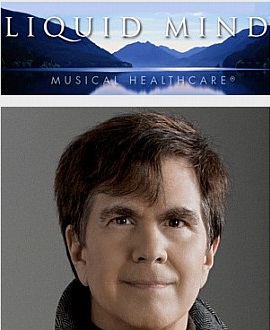 Chuck Wild: After co-writing the above mentioned song for the Pointer Sisters, I was approached by Linda Perry, VP of Lorimar Telepictures Music Publishing Division about becoming a staff songwriter there. My deal continued with Warner/Chappell Music after Warner Brothers purchased Lorimar a couple of years later.
Chuck Wild: After co-writing the above mentioned song for the Pointer Sisters, I was approached by Linda Perry, VP of Lorimar Telepictures Music Publishing Division about becoming a staff songwriter there. My deal continued with Warner/Chappell Music after Warner Brothers purchased Lorimar a couple of years later.
A lot of artists recorded songs I wrote or co-wrote back then including Philip Bailey (from Earth Wind & Fire), Jennifer Rush (I co-wrote a #1 song in Europe for her Passion album called You’re My One and Only), Tommy Page (now a publisher at Billboard Magazine), Glen Medeiros (who sang High Wire from one of the Karate Kid films), Hidden Faces (who sang Hurt So Bad to Love which has appeared in several films), the legendary Japanese band Wink recorded my song One Kiss At a Time.
Thelma Houston, Gary Lemel, Vector, Angela Cole, the Perri Sisters and David Pomeranz are some of the other artists recording my songs back then. In the early 90’s I also recorded two libraries of neo-classical instrumental music, which have had hundreds of plays in dozens of television episodes & films.
More recently I’ve also co-written a number of songs for television & film with the Emmy-winning president of the California Songwriters’ Association, Michèle Vice-Maslin, including Starr X’d Lovers, our Emmy-nominated song in 2011.
John: After leaving Missing Persons you began producing music designed for relaxation under the artist name Liquid Mind®. What was the turning point in your life that led you to begin producing music in the new age genre that is near opposite to the music of Missing Persons?
Chuck Wild: In 1987 while co-composing music with Michael Hoenig for the Emmy-winning Max Headroom ABC-TV series, the filming & post-production of the show got seriously behind schedule, and instead of having 2-3 weeks to score each episode, we typically had only 4-5 days to score, write, arrange and mix 43 minutes of music for each episode, meaning there was little time for sleep. For three months, I slept only about 4 hours a night, usually in the studio. At the same time, a large number of my friends were dying of what was then called AIDs, so I was very stressed out and sleep deprived. I started having anxiety attacks, then panic attacks. The show was cancelled in late 1987 and I went home to rest, and actually became agoraphobic (wouldn’t leave home for several weeks).
At one point during a particularly bad panic attack, co-composer Michael Hoenig and Peter Wagg, the producer of Max Headroom, took me to an urgent care clinic. After examining me, the doctor held up two things in his hands. In one hand was a bottle of anti-anxiety medication, in the other hand was a sheet of paper with instructions on how to do a simple clearing meditation. The doctor said, “Chuck, they both work equally as well for what you have – clinical anxiety. It’s up to you: Medication or Meditation?
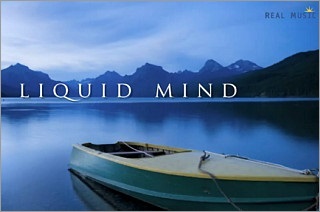 There’s only one letter difference between the two.” I chose meditation over medication that day. The instructions were for a simple clearing meditation, just breathing slowly in and out and counting a number for each breath from 1 to 10, and repeating over and over. To this day, I still have a section at my site for a “meditation break” with those instructions.
There’s only one letter difference between the two.” I chose meditation over medication that day. The instructions were for a simple clearing meditation, just breathing slowly in and out and counting a number for each breath from 1 to 10, and repeating over and over. To this day, I still have a section at my site for a “meditation break” with those instructions.
The meditation helped quite a bit, but I was still unstable at times. My friend Jeff Kingfisher (composer, recording artist, and inventor of Muzoracle, Musicians Dice, and Muzundrum musical board game) suggested I see a counselor friend of his. The counselor suggested that, as part of my healing from anxiety/panic, I try to compose the type of music that represented the way I wanted to feel.
Liquid Mind was borne of the thought: Music can help heal me, and sonically represented the calm I yearned for. She also encouraged me to increase my meditation time to an hour a day.
Though I don’t meditate that long these days, it was a great help to me at the time, and brought me much peace. My early meditations and slow music efforts (especially Zero Degrees Zero from the first Liquid Mind album), plus some intensive therapy with excellent counselors, brought me some relief, enough to leave the house and start a routine of counseling and weekly acupuncture. Within a couple of years, I was pretty much anxiety free and physically recovered from the harm I’d done myself in those 3 months of sleep deprivation and stress.
John: What would you say are the defining characteristics of Liquid Mind Music?
Chuck Wild: There are several readily identifiable characteristic of my music. First and foremost, the music has no predominant rhythm, and is sometimes called “zero beat” music. One day while sitting on the rocks in Laguna Beach, CA, on a therapist-mandated “mini vacation”, I realized that the sound of the ocean was continuous, low and rich, tonally complex, never stopping, and deeply relaxing. That day I came up with the name “Liquid Mind” (i.e. liquid-ocean was relaxing my mind). I determined that the sonic characteristic of my healing music must be similar to the ocean.
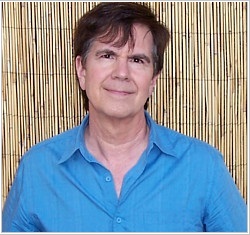 I favor low frequencies, continuous sound, absence of any predominant rhythms, gradual but sometimes complex textural and harmonic changes, moving at about the speed of my breathing, ebbing and flowing at times, and the inclusion of sampled vocal sounds subtly playing chords. Live singers weren’t added until later albums, but I definitely prefer the more organic live vocal textures. Tenors AJ Teshin and Seven Whitfield have sung on almost every album since 2001, and more recently tenor Jimmy Demers as well.
I favor low frequencies, continuous sound, absence of any predominant rhythms, gradual but sometimes complex textural and harmonic changes, moving at about the speed of my breathing, ebbing and flowing at times, and the inclusion of sampled vocal sounds subtly playing chords. Live singers weren’t added until later albums, but I definitely prefer the more organic live vocal textures. Tenors AJ Teshin and Seven Whitfield have sung on almost every album since 2001, and more recently tenor Jimmy Demers as well.
This music is tedious to record, to say the least, since the pieces are long form (many are 10-15 minutes length), and so slow moving. Liquid Mind albums can take 5-7 months to write, arrange, record, mix, and master. Also, as I’ve been caffeine free since 1988, I definitely get drowsy while working on this music, especially during the mixing process and have learned the benefits of a fifteen-minute power-nap!
John: What is sedative or therapeutic music primarily used for?
Chuck Wild: Music therapy, which includes almost every style of music imaginable, is administered by a certified music therapist (who often has a master’s degree in music therapy), and can help most anyone who has a health issue. My sedative music is but a tiny part of the music therapist’s toolbox. The American Music Therapy Association, a wonderful organization which certifies and educates music therapists, says this: “Music Therapy is an established healthcare profession that uses music to address physical, emotional, cognitive, and social needs of individuals of all ages. Music therapy improves the quality of life for persons who are well, and meets the needs of children and adults with disabilities or illnesses.”
I’m not a music therapist myself, but as a composer of therapeutic music, I’m an associate member of the American Music Therapy Association, and was honored to receive their Presidential Award in late 2009. The terms “sedative” and “stimulative” are used to describe less active and more active music. It’s up to the attending physician and the attending music therapist to decide together whether a patient needs relaxation (as in the case of folks with PTSD, anxiety, pain, grief, emotional exhaustion, sleep deprivation etc.) or stimulation (like some elderly, for example, or someone who’s suffered a stroke).
John: Scientific studies have documented the positive effects of therapeutic music, and in your case the benefits of calming music proved to be successful by relieving your personal medical issues with anxiety and panic attacks. But do you feel music therapy can be beneficial to everyone?
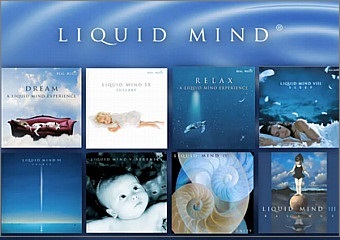 Chuck Wild: Music therapy interventions can be designed to manage stress, help folks learn to express their feelings, alleviate physical pain, improve communication, promote physical rehab, enhance memory, and generally promote wellness. It’s really quite amazing, and most music therapists use music with characteristics that are proven in evidence-based research to achieve a particular healing effect.
Chuck Wild: Music therapy interventions can be designed to manage stress, help folks learn to express their feelings, alleviate physical pain, improve communication, promote physical rehab, enhance memory, and generally promote wellness. It’s really quite amazing, and most music therapists use music with characteristics that are proven in evidence-based research to achieve a particular healing effect.
John: Of course one doesn’t need to have a specific medical issue like panic attacks to benefit from, and enjoy your music, so what are some of the ways people use Liquid Mind Music other than this particular medical disorder?
Chuck Wild: A lot of folks use my Liquid Mind music to relax prior to going to sleep. Dr. William Dement, the “father of sleep medicine” offered an unsolicited endorsement of my 8th album, Liquid Mind VIII: Sleep as part of a pre-sleep routine. I collated some “sleep tips” from his book and other sources, which can be accessed from my website. Massage therapists and yoga instructors use Liquid Mind frequently. One use I don’t recommend is driving while listening to my music. There’s a warning on every CD & my website about that.
Liquid Mind is also used in dozens of healthcare settings for different purposes. I’ve heard from doctors, nurses, music therapists, state prison counselors, drug rehabs, hypnotherapists, yoga instructors, massage therapists, acupuncturists, psychologists, cancer chemotherapy centers, psychologists and other counselors, ministers, meditation teachers, hospice caregivers, special needs school teachers, and many patients who use the Liquid Mind® music for healing. I’m quite humbled by the over two thousand gratitude emails I’ve received from patients and their families. I never imagined there would be that much interest in my music.
John: Like you stated earlier, Liquid Mind albums are composed using specific techniques based on scientifically supported research to achieve the desired physical responses. Based on these scientific studies, could you tell us the techniques you use when composing your music?
Chuck Wild: Evidence based research does support some characteristics of Liquid Mind – bass (lower) frequencies and vocal sounds are perceived to be relaxing to humans, because when we’re in the womb, a safe place prior to birth, we don’t hear a lot of treble frequencies, it’s more muffled sounds, and we get used to the sound of our mother’s voice, so there is that familiarity. I’ve done some unpublished research myself using a bi-spectral index anesthesia monitor, and determined that continuous slow music (similar to ocean sounds) has a “masking” effect on other environmental sounds, making it much easier to relax.
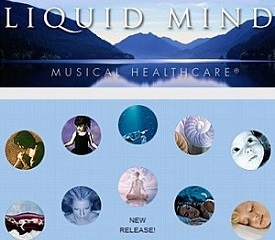 There is also the effect of entrainment, which in a reverse way, in my own non-scientific opinion, helps Liquid Mind to relax folks. Entrainment is the propensity for two oscillating systems (imagine two pendulum clocks on a wall) to entrain and move at the same time. This happens in biological systems as well. When I hear fast music, my heart rate rises. When I hear slow music, my heart rate falls as muscle relaxation ensues.
There is also the effect of entrainment, which in a reverse way, in my own non-scientific opinion, helps Liquid Mind to relax folks. Entrainment is the propensity for two oscillating systems (imagine two pendulum clocks on a wall) to entrain and move at the same time. This happens in biological systems as well. When I hear fast music, my heart rate rises. When I hear slow music, my heart rate falls as muscle relaxation ensues.
My recording process is as follows: (1) I spend 4-5 weeks sketching about 40 pieces, 10-20 minutes each (2) I choose the best 5 or 6 pieces (3) I spend 6-10 weeks arranging, really the most difficult stage, where I’m smoothing any attacks on the sounds I use (generated from 10-15 synths and dozens of tracks of live vocals).
The music sounds quite simple, but the texture is always in motion under the surface. (4) 6-10 weeks mixing and creating the sonic fingerprint of Liquid Mind. (5) 2 weeks premastering where I reduce certain mid-high frequencies, boost certain bass frequencies and importantly to volume-match within and between the pieces.
I don’t want someone to have to reach for a volume adjustment while they’re listening. (6) 1 or 2 weeks mastering with Bernie Grundman here in Hollywood. Bernie is a legend in the recording industry and he and Joe Bozzi supervise the final touches of the process.
John: Liquid Mind albums are consistent best-selling albums making the Top 25 sales charts at Billboard again and again. In fact your 8th album Liquid Mind VIII: SLEEP was on the Billboard top 25 sales charts for over a year, and has reached #1 on the iTunes USA Top Ten New Age Chart countless times. Were you at any point surprised by the widespread popularity of your work has received or did you “just know” your music would achieve universal acceptance?
Chuck Wild: I never really expected to have the kind of acceptance I’ve had for Liquid Mind®, it was a pleasant surprise when I started charting on iTunes. I’ve always worked hard at making Liquid Mind “pay for itself” as a business, but was surprised when Liquid Mind VIII: SLEEP showed up on the Billboard® New Age sales charts for over a year running.
John: To say your music career is diverse is an understatement Chuck! You have received a lot of recognition for your work as Liquid Mind over the years so would you please tell us about the honors and awards you’ve achieved?
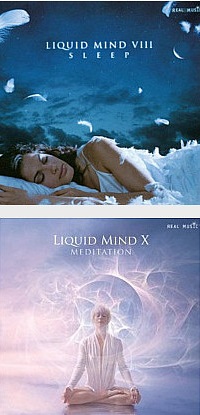 Chuck Wild: I’ve had some recognition from the Academy of Television Arts & Sciences (Emmy® nomination), the American Music Therapy (Presidential Award for advocacy and support of the music therapy profession), Billboard and iTunes USA charting dozens of times (for sales), Coalition of Visionary Resources award for Best Meditation/Healing Album for Liquid Mind VI: Spirit, Northern California Independent Film Festival best score honors for the award-winning short animation film “Horses on Mars” which exclusively used music from the first Liquid Mind album. Most recently, the prestigious Zone Music Reporter, representing US new age broadcasters and program directors, has nominated my new album, Liquid Mind X: Meditation for Best Electronic Album of 2012.
Chuck Wild: I’ve had some recognition from the Academy of Television Arts & Sciences (Emmy® nomination), the American Music Therapy (Presidential Award for advocacy and support of the music therapy profession), Billboard and iTunes USA charting dozens of times (for sales), Coalition of Visionary Resources award for Best Meditation/Healing Album for Liquid Mind VI: Spirit, Northern California Independent Film Festival best score honors for the award-winning short animation film “Horses on Mars” which exclusively used music from the first Liquid Mind album. Most recently, the prestigious Zone Music Reporter, representing US new age broadcasters and program directors, has nominated my new album, Liquid Mind X: Meditation for Best Electronic Album of 2012.
John: You are an artist with most of your albums on the successful Real Music Label, which features a quality lineup of top industry artists like yourself. What are the advantages to marketing your music through the Real Music Label?
Chuck Wild: John, I ran my own label for 10 years (1994-2004), focusing only on Liquid Mind, supervising employees and working seven days a week, with very long hours. That left me little time to create music, and even less time to “have a life.” In 2004, I decided to approach Terence Yallop and his wife Karen Kael, the owners of Real Music, about taking over distribution (i.e. licensing) of my first six albums, and also signing a recording agreement for four additional albums.
I’d met Terence in 1994 or 1995, and by 2004, and knew he and Karen had been meditating to my Liquid Mind music almost daily for ten years, so it seemed like a good fit. Real Music has real integrity, being one of the few New Age labels to survive the mergers of the 80’s, 90’s and 00’s, and to prosper in the downturns that have plagued the music industry. Terence and Karen and the wonderful staff at Real Music have remained true to their mission of bringing the music of relaxation, renewal and healing to everyone on the planet who can benefit from it.
To answer your question more specifically, there are economies of scale from being signed to a label. I get to work less time on administration and more time on music. Real Music has been a respected and established label for over 25 years in this niche, and it’s a relief to have the label administering, promoting and distributing my catalog. BTW, most recently my friend and Real Music label mate Omar Akram won the Grammy for his latest album.
John: What would you say are the fundamental differences in the music you compose versus meditative or made for relaxation albums created by other artists in the same category?
Chuck Wild: There is wonderful relaxation/meditation music by many artists from all over the world. Since relaxation is often cultural, something that may be relaxing in one country or society might not be perceived favorably in another. So, it’s a bit difficult to compare artists. I’d say Liquid Mind has different characteristics than some relaxation music. My music tends to be slower; perhaps more mellow sonically, laced with European classical harmonies, and is notable for the absence of any percussion instruments. I don’t listen much to other artists unless I’m working with them, so don’t consider myself an expert. One of my former students, the talented composer and performer Armen Chakmakian, is fond of saying that all music is relaxing and healing to someone. I fully agree.
John: Liquid Mind albums and songs are available on audio CD, but is all of your music available as digital downloads too?
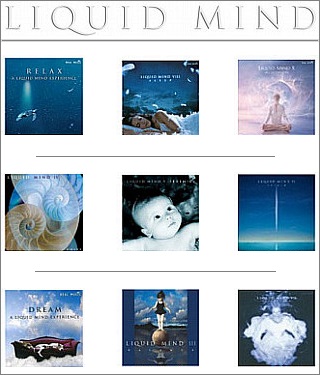 Chuck Wild: Yes, all twelve albums (ten studio CDs and two compilations) are available both digitally and on CD. 70% of Liquid Mind sales are now digital, fewer CDs are still being sold these days. All twelve Liquid Mind® albums are sold through iTunes, Amazon.com, CDBaby.com, and dozens of digital sites. Real Music also sells all albums, both in digital and physical CD copies. Liquid Mind is streamed around the clock on Pandora, Spotify and just about every streaming service, as well as dozens of internet radio stations, digital television, and Sirius XM.
Chuck Wild: Yes, all twelve albums (ten studio CDs and two compilations) are available both digitally and on CD. 70% of Liquid Mind sales are now digital, fewer CDs are still being sold these days. All twelve Liquid Mind® albums are sold through iTunes, Amazon.com, CDBaby.com, and dozens of digital sites. Real Music also sells all albums, both in digital and physical CD copies. Liquid Mind is streamed around the clock on Pandora, Spotify and just about every streaming service, as well as dozens of internet radio stations, digital television, and Sirius XM.
John: It’s a well-known fact the music industry as a whole has experienced serious problems with piracy issues. Has there been much improvement regarding piracy as a whole, and have you ever experienced problems with piracy yourself?
Chuck Wild: Unfortunately, the technological advances that enable file sharing have hit our industry (and many other industries) hard. At one point, all my Liquid Mind albums were on nearly 100 pirate websites.
It can be disheartening, but there’s really nothing substantial that can be done about it until music fans grow to understand the harm free file-sharing does to artists, engineers, producers, songwriters, composers, performers, and employees of labels. I think the most devastating effect of piracy is that it has caused the disappearance of several major labels, and destroyed a portion of the major label “farm club” system that used to nurture new artists.
These days, instead of a new artist spending their time on music, they must become musical entrepreneurs, wearing every hat (producer, engineer, publisher, label, PR person, social media expert, marketer, and so forth). I personally believe that the quality of music has suffered and the majority of new artists are never able to make a “sustainable” living at music now.
Major labels have been criticized for being greedy and taking advantage of artists, which may have happened in some cases, however, it’s estimated that only 5% of artists ever sell enough albums to break even. The other 95% of artists used to be supported by the top 5%. But that system of artist development is no longer in place for the most part.
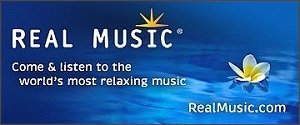 Individuals and some websites like Kickstarter have stepped in to fill that void, but these efforts require a lot more time commitment to business by the artists, meaning less time to grow musically. Pirate sites do, in a sense, provide some promotional value, as long as folks go on to support artists by purchasing some tracks, but there is no proof that this is happening on a large scale and overall music sales have declined over 50%.
Individuals and some websites like Kickstarter have stepped in to fill that void, but these efforts require a lot more time commitment to business by the artists, meaning less time to grow musically. Pirate sites do, in a sense, provide some promotional value, as long as folks go on to support artists by purchasing some tracks, but there is no proof that this is happening on a large scale and overall music sales have declined over 50%.
Like every other artist, Liquid Mind has been hit by file-sharing. I’m in hopes that folks are now coming to the understanding that artists, composers, singers, arrangers, engineers, mixers, studios, and label staff spend many months creating an album and preparing for release, and are just asking for fair compensation for their time. Though I enjoy music production, it is a business for me, and every other artist, especially as we grow older. Without support of fans and listeners, many artists will need to turn elsewhere to make a living.
John: During interviews I try to provide the latest press news for my artist and their fans if possible. Can you release any news information or perhaps give us the details if you have plans for a new Liquid Mind album?
Chuck Wild: I have no plans for release of a new Liquid Mind album, having just released Liquid Mind X: Meditation in September 2012. This year, I’m focusing on pop music production, and my classical piano pieces.
John: You have enjoyed several distinctly separate, but highly successful careers in your lifetime. What do you find most rewarding, songwriting/composing, production or being a musician?
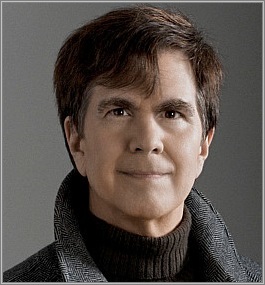 Chuck Wild: In my own case, the three are synergistic, and I find reward in all of them. I love what the great writer Pearl Buck said: “The secret to joy in work is excellence.” I strive for (but never fully achieve) excellence.
Chuck Wild: In my own case, the three are synergistic, and I find reward in all of them. I love what the great writer Pearl Buck said: “The secret to joy in work is excellence.” I strive for (but never fully achieve) excellence.
The process is what keeps me going, especially when working with folks who have high standards and are willing to take the time required for high quality work. I’m producing a young artist now, one of the singers from NBC’s The Voice, Nathan Parrett.
He’s a terrific talent both as singer and songwriter, and it’s one of those opportunities to excel that make me get up every morning with a smile on my face. As well, I’ve written seven short classical preludes for piano, available for free at ChuckWild.com (including pdf sheet music), and am about one-third of the way through a long form (22 minute) piano sonata at the moment.
John: I enjoyed reading more about your fascinating life and career while preparing for our interview together Chuck. I hope we have a chance to interview again in the future. In closing for now, I want to thank you again for giving everyone this opportunity to find out the latest news about you, and the music of Liquid Mind. Is there anything you would like to express to the fans that have supported you over the course of your career?
Chuck Wild: I’m incredibly grateful to fans of Liquid Mind, and the many healthcare practitioners that use my music for healing. There is no greater reward for me than knowing someone’s life is made easier by listening to my music. Thanks so much, John, for this opportunity to be part of your wonderful website. I want you to know how much I and many other artists appreciate your support of the music profession and music creators.
To listen to samples or purchase songs and albums by Liquid Mind®, visit LiquidMindMusic.com. To learn more about Chuck’s non-Liquid Mind projects at ChuckWild.com. To find album and single digital downloads, CDs and song samples, visit Liquid Mind at RealMusic.com. Liquid Mind albums and songs may also be sampled or purchased at Amazon.com and iTunes.com. Follow Chuck at Facebook and Twitter social media. Photo and cover art courtesy Chuck Wild & Glen Wexler.

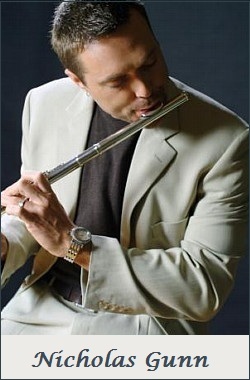 Nicholas Gunn Interview – Special News in 2013 and Forward:
Nicholas Gunn Interview – Special News in 2013 and Forward:
Multi-platinum recording artist Nicholas Gunn is a classically trained flutist recognized as one of the best-selling instrumental flutists worldwide.
Famous for the contemporary atmosphere and resounding beauty of his music, Nicholas Gunn has achieved earlier success of over 2 million albums sold, having become a legendary artist in the instrumental music industry, with many of his albums reaching the Top 10 Billboard Charts.
Nicholas Gunn’s newest instrumental release for 2012, and perhaps most significant of all is his fourteenth album named Thirty-One Nights, which arrives after an interval of 5 years. The highest standards we have come to expect are expertly portrayed on Thirty-One Nights, which enlists the world-class talents of vocalist Dana Kemmerle, along with acoustic guitarist Chris Fossek.
New Age Music World host John P. Olsen had an opportunity to interview Nicholas Gunn months prior to 2013. During the newest interview with Nicholas Gunn the range of topic include a conversation about his new album, history and career as an artist, National Park albums, and the Gemini Sun Records Label he once owned and operated.
Nicholas Gunn also states his views on today’s music industry and the upcoming Ballots and Nominations for the 55th GRAMMY® Awards. And perhaps most importantly, Nicholas Gunn has released a significant news announcement regarding his music career going forward. Today we are pleased to present their conversation to fans, and to Music World site visitors.
John P. Olsen: Thank you for accepting my interview invitation Nicholas. It is a privilege to host your newest interview in 2012, here at New Age Music World. I have been a huge fan of your music for many years, plus I enjoyed reading even more about you while preparing for our interview together. I must say you have experienced a fascinating life and career Nicholas.
Nicholas Gunn: Thank you John, it is really a pleasure to be a part of your music forum today, and it’s great to see how popular New Age Music World has become.
John: Thanks for your compliment! Let me begin with your earliest experiences as a musician, since your educational studies seem to have been a formative influence in the music you produce today. You were born in South East England, and were academically trained from age 7 to 11 in classical music at the Royal Academy of Music conservatoire in the UK. While attending the Royal Academy of Music, what led you to choose woodwinds over other instruments, and would you please tell us about your earliest academic studies, training and first introduction to music while living in the UK?
 Nicholas Gunn: I grew up in a small, quaint village called Hartlip in Kent County England. It was in many ways a beautiful childhood. I think when there is that much space around you and the chatter is minimized, it’s easier to focus on things such as music. When I was around 5 or 6 I used to watch Top of the Pops on TV and tap away on the side of the couch. I think my folks were listening carefully to see if I had any sense of rhythm and inclination for music.
Nicholas Gunn: I grew up in a small, quaint village called Hartlip in Kent County England. It was in many ways a beautiful childhood. I think when there is that much space around you and the chatter is minimized, it’s easier to focus on things such as music. When I was around 5 or 6 I used to watch Top of the Pops on TV and tap away on the side of the couch. I think my folks were listening carefully to see if I had any sense of rhythm and inclination for music.
My Grandfather was a professional guitar player with The Felix Mendelssohn Orchestra so I think there was a desire in many ways to keep the music going in the family. I remember at 6 seeing a performance on TV of Sir James Galway and thinking how beautiful the flute sounded. It stuck with me and when my folks asked me what I wanted to play as an instrument that’s immediately what I said. It’s crazy really, the next thing I know I am taking lessons at 6 from the Royal Marines Bands principle flautist, Mick Judson. An incredible experience, full of wonder and endless possibilities!
He would come to my house in Hartlip once or twice a week for lessons and I would take my exams in London; it was a lot for a young kid but really rewarding. He was a great instructor and man, and a big part of the foundation my music is built upon. One time, Mick allowed me to sit with him in the pit orchestra to the musical Oliver in London, and I remember having a brief encounter with Sir James Galway during this time and thinking, this is really what I want to do!
By the time we moved to Los Angeles in 1979 I had music training most eleven year olds rarely acquire and was a misfit really. It was tough, as an eleven year old boy, walking with your flute to band through junior high school. I witnessed a huge disparity in culture and acceptance of art on multiple levels. It was cruel and I was pissed off at these kids that bullied me. There were several occasions I would walk outside of gym class and I would have my ass handed to me on a platter for playing flute. Its cliche really, all band kids experience bullying, some more than others, it’s just the way it was and sometimes still is. My music holds a sense of compassion I have trouble finding otherwise. I believe it has healed me and allowed me an outlet of expression to resolve these feelings for myself. I like to believe there is no anger in my music, just love, beauty, compassion, and acceptance. I wanted to convey that message.
John: Knowing now that the Royal Academy of Music Alumni include other great artists like Elton John, Annie Lennox and Michael Nyman, and others; did you appreciate the fact at the time you were beginning a strong foundation for a successful music career later in life?
Nicholas Gunn: No, not really, not at that time. I had no idea about any of those things. It was more a feeling of this is what everyone does. When you are that young, there is no real sense for “aligning” yourself within academics or community. I pretty much followed what my folks told me to do, and believed it to be normal, and now have immense appreciation for them guiding me and recognizing my potential.
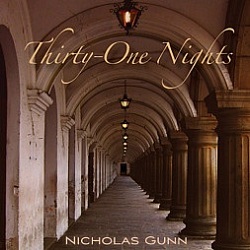 John: Classical music influences are apparent in your compositions, including your new album Thirty-One Nights. What classical music elements, for example structure, rhythm or metrics, do you find most appealing?
John: Classical music influences are apparent in your compositions, including your new album Thirty-One Nights. What classical music elements, for example structure, rhythm or metrics, do you find most appealing?
Nicholas Gunn: I have to say it’s the interplay between rhythm and melody. Being a flautist, I studied mostly counterpoint theory at the academy. We poured over the great composers in detail and I absorbed the constant interplay you find in lead lines, counter melody lines, and the foundation it all sits upon; rhythm. I believe that one essential element of music is structure. Meaning; memorable, reoccurring, lasting melody will always make an impression on the listener over a long extended period of time.
As an instrumentalist I find it even more important to remember this. Strong verse, chorus, turnaround and bridge are vital to great compositions. If the music lacks a lyric and a vocal, I believe it’s even more important to impress structure and melody on the listener. Think about it, music in the moment can be inspirational, but if one can reflect upon a composition because of its melody and literally be transported to that moment in time again, that is the true essence of the music experience on the human experience.
John: What was the turning point when you decided to pursue a challenging career as an artist?
Nicholas Gunn: When I was around 16-17 years old I side stepped flute for a few years and took up drums, playing in both marching band and several rock bands. I literally played the kit in every bar on the Sunset Strip over a three year period including The Whiskey, The Roxy, Madam Wong’s, The Troubadour, etc. It was a great experience at a very young age and it gave me the douse of confidence I needed. I had a brief stint doing some commercials and modeling as well and actually made a few bucks but that’s a whole different story! I came out of this phase “knowing” I guess you could say, that there was only one direction for me, and that was to fully immerse myself into creating my own instrumental music.
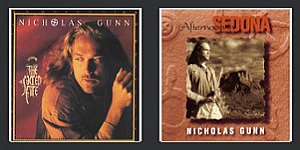 I was a huge fan of Vangelis, Jean Michael Jarre, Pink Floyd etc., and saw that instrumental music had its place in the market and was growing at that time. I bought some recording gear and schooled myself in engineering and production, learning how to get recordings to sound great! I went down to Westlake Studios and other studios in West Hollywood and just hung out asking awesome stupid questions and rubbing shoulders with the best engineers. There was no question afterward that I was fiercely dedicated to making my own music.
I was a huge fan of Vangelis, Jean Michael Jarre, Pink Floyd etc., and saw that instrumental music had its place in the market and was growing at that time. I bought some recording gear and schooled myself in engineering and production, learning how to get recordings to sound great! I went down to Westlake Studios and other studios in West Hollywood and just hung out asking awesome stupid questions and rubbing shoulders with the best engineers. There was no question afterward that I was fiercely dedicated to making my own music.
John: You released your first album Afternoon In Sedona in 1992, and a year later re-released Afternoon In Sedona thru the Real Music record label, which directly influenced sales, and changed the course of your career, isn’t that right?
Nicholas Gunn: That’s pretty accurate I would say. Before being signed to Real Music I had worked pretty hard to get popular retail chains such as Natural Wonders and Nature Company to recognize myself release of Afternoon in Sedona. Those were great retail chains and they focused on a select amount of instrumental titles in their thousands of high end stores. It was easy math really; mass retail exposure, select titles, genre specific, those were great days for sales! I had sent Real Music several submissions of Afternoon in Sedona but it was only until Natural Wonders showed interest they offered me a deal. It made sense for everyone and we re-worked the album a little and re-released in 1993 to moderate success, not big success mind you! There was a heightened awareness of the product but it was not until my second album The Sacred Fire that things changed drastically.
John: That’s right your 1994 release The Sacred Fire, was the first album to make the Top 10 Billboard Charts in the new age category. Were you surprised by making the Billboard Top 10 New Age chart verses another category since your albums can be placed in a broader, instrumental or world music category?
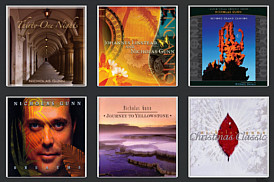 Nicholas Gunn: No, I was not surprised actually. Real Music had made it clear we were binning the album New Age at retail. Back in those days, binning was integral to sales and exposure and once you chose your category, well you’re pretty much stuck, especially if you sell.
Nicholas Gunn: No, I was not surprised actually. Real Music had made it clear we were binning the album New Age at retail. Back in those days, binning was integral to sales and exposure and once you chose your category, well you’re pretty much stuck, especially if you sell.
The New Age chart was an accessible chart as well, meaning it was an emerging genre and not so saturated with other artists. The Sacred Fire actually did not receive its initial success at conventional retail but started selling big at both Natural Wonders and at Nature Company.
The album was literally blowing out the doors holding a #1 chart position in the chains for a year or so. Around this time conventional retail chains such as Borders and Barnes were watching this emerging genre closely and started to expand their New Age Music selections and positioning.
The Sacred Fire album, along with my third album, The Music of the Grand Canyon, which closely followed, was embraced and we finally received chart position through sales at these and similar retail chains.
John: I must say your newest release Thirty-One Nights, which debuted on the Billboard Top Ten New Age Chart, is a beautifully designed album Nicholas. Your albums have consistently made the Top 10 Billboard Charts over the years, so I wondered is making the Billboard Chart is an accurate litmus test for an album’s success over the long haul?
Nicholas Gunn: Thank you John, I am happy to hear Thirty-One Nights resonates with you. This is a great question, but I think it’s important to clarify what Billboard chart position actually means as it seems there is a general misunderstanding of how the system really works. Billboard is an independent trade magazine that reports industry sales via chart position. Billboard receives its sales data from another company called Soundscan.
Soundscan retrieve its sales data from Soundscan retail members. For example, Wal-Mart pays an annual fee to be a member of Soundscan, required by the RIAA (Recording Industry Association of America) that they participate as a major and recognized record retailer. Barcodes at the register are scanned upon sale and sent to Soundscan acknowledging each sale. At major online retailers such as iTunes it is via the embedded ISRC code on the MP3 data through digital download.
 Depending on the zip code of sale, one sale can actually represent two or more sales due to the remote location of the sale and person per capita of the zip code. If you are a small retailer, mom or pop store, or even a significant type of other retailer, then most often, these retailers are not participating members of Soundscan. Sales in turn are not being reported, at all! At the height of my sales through alternative retailers such as Nature Company, Natural Wonders, National Park stores, hundreds of thousands of sales went unrecognized as they were not members of Soundscan. There are no gold or platinum records on my walls despite my significant overall sales within the industry.
Depending on the zip code of sale, one sale can actually represent two or more sales due to the remote location of the sale and person per capita of the zip code. If you are a small retailer, mom or pop store, or even a significant type of other retailer, then most often, these retailers are not participating members of Soundscan. Sales in turn are not being reported, at all! At the height of my sales through alternative retailers such as Nature Company, Natural Wonders, National Park stores, hundreds of thousands of sales went unrecognized as they were not members of Soundscan. There are no gold or platinum records on my walls despite my significant overall sales within the industry.
The Billboard chart positions I actually received over the years were from a fraction of these sales through member participating retailers such as Borders, Barnes, Sam Goody, etc. With that said, while Billboard is indeed an actual litmus test of the success of a title, it does not represent the overall sales performance of a title accurately. My mentor, Harvey Cooper, always said; “Comments and opinions of music are only perceptions but real sales are a true indicator of commercial success.”
John: On your fourteenth album Thirty-One Nights, I must say you have a great team with vocalist Dana Kemmerle and guitarist Chris Fossek. How did you meet Dana and Chris, and could you tell us about the project you created together?
Nicholas Gunn: I met both Chris Fossek and Dana Kemmerle in Santa Barbara, CA. Chris was a local accomplished musician, who has been playing the Santa Barbara circuit for some time. I heard him at a local wine bar and quickly realized this guy had great technique and style. At that time I was starting to formulate what I wanted to do for a new album and listening to him play was really inspiring! I got to know Chris over a period of months before we started tracking together and we became tight friends.
We are the same kind of people, infusing our music with our life experiences! Chris wrote several pieces on the album which allows it to transition beautifully at two main points; Candle Dance & From Water to Wind. Chris also wrote the title track Thirty-One Nights which sets the tone of the album so well. Dana is an absolute breathe of fresh air. After deciding to finish her graduate degree at UCSB in global studies our paths crossed at the very same wine bar I first met Chris in.
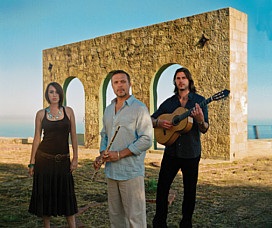 Dana has been the core inspiration behind the experience and story that became Thirty-One Nights. I was going through a very difficult time with many changes in my life and she was continuing on with her studies in Spain and in Mexico. We became romantically involved and the next thing I know I asked her to record some spoken word vocals on a track that became track 13 Recuerdame, on the album.
Dana has been the core inspiration behind the experience and story that became Thirty-One Nights. I was going through a very difficult time with many changes in my life and she was continuing on with her studies in Spain and in Mexico. We became romantically involved and the next thing I know I asked her to record some spoken word vocals on a track that became track 13 Recuerdame, on the album.
She has a gorgeous balanced tone in her speaking voice and it was an instant match and hit for me in the studio and many more tracks followed! It’s difficult to make spoken word work within music; it has to be just right! Dana and I now work passionately together in many aspects of our lives. We spent thirty one nights together in Mexico recording flutes on top of Mayan pyramids and writing poetry deep in the jungle. She’s one smart cookie, has a healthy and balanced perspective on life, and someone I want to associate and grow with for a very long time.
John: What are the vital key elements Dana and Chris convey to your instrumental with vocals composition Thirty-One Nights?
Nicholas Gunn: Well, Chris comes from an extremely studied background in music with a master’s degree from Cal Arts in Flamenco guitar. It was important to me that I had an authentic approach and sound for Thirty-One Nights. Authentic Flamenco playing includes so many different aspects, such as the knocking on the guitar body, types of open strumming and closed strumming and where picking occurs over the sound hole. Even finer details, such as which part of the finger nail is used to create different sounds against the string, are all important factors!
The guitar itself is vital to the sound. Chris plays on a handcrafted Manuel Bellido guitar which includes design features such as a wider neck and intricate body/sound hole design. Nylon strings are always used, of a certain type, and after a certain amount of wear. There are no pickups used in recording and a single microphone placement to capture a clean natural sound. These are all important factors that create a certain resonance consistent with Flamenco guitar. His writing style is also different than mine which lends to a well-balanced album that transitions at all the right spots. It’s a good partnership in that we are different in all the right ways! With Dana it is about a personal and emotional connection that is intimate.
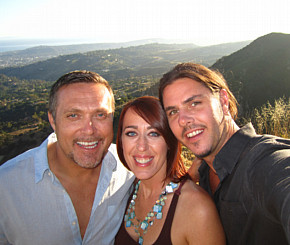 We experienced Thirty-One Nights together in real time and she has watched, supported, and participated in the unfolding of the album over a year and a half. She has a beautiful speaking voice and her bilingual abilities were a perfect and authentic evocative addition to the album. I have used spoken word sparingly before, and I am telling you, it’s a hard thing to pull off! Dana just had this tone and approach that was, well otherworldly, very seductive such as on The Swallows of Na’ Lu’um. We walked together through jungles, remote Mayan pyramids, went cave diving in Senotes, and used this experience to fuel creativity. Dana wrote about her experiences and created poetry centric to the experience. Dana and I are continuing to work on other exciting projects and in business together. We are partners in many ways.
We experienced Thirty-One Nights together in real time and she has watched, supported, and participated in the unfolding of the album over a year and a half. She has a beautiful speaking voice and her bilingual abilities were a perfect and authentic evocative addition to the album. I have used spoken word sparingly before, and I am telling you, it’s a hard thing to pull off! Dana just had this tone and approach that was, well otherworldly, very seductive such as on The Swallows of Na’ Lu’um. We walked together through jungles, remote Mayan pyramids, went cave diving in Senotes, and used this experience to fuel creativity. Dana wrote about her experiences and created poetry centric to the experience. Dana and I are continuing to work on other exciting projects and in business together. We are partners in many ways.
John: Would you like to tell us more of the story for Thirty-One Nights, and inspiration behind the songs?
Nicholas Gunn: There is a special Thirty-One Nights storybook PDF, with personal photos, that is embedded on the CD and is also available with a full album download. It would be my pleasure to share this with your readers and is the best way to answer this question. Enjoy!
John: I read Thirty-One Nights had a release date of September 11, 2012. Was there any significance of releasing Thirty-One Nights on 9/11, a date now recognized as the American Federal Holiday – Patriot Day?
Nicholas Gunn: No, not at all. Here is the thing; September 11th is a recognized national street date with most major music distributors. This street date has long been in place before the unfortunate events of 9/11. I decided to sign with label Spring Hill Media, distributed by Allegro Media and their system adheres to these dates. I try not to make any political or religious references in my music and this date did not influence me in any way. A broad stroke approach to creating provocative, moving, and inspirational music is my only goal.
John: You have a great number of National Park records, which began under Real Music Record Label. The Music of the Grand Canyon, Beyond Grand Canyon, Through the Great Smoky Mountains, Journey to Yellowstone, plus there are others. How and why did you become involved with the production of National Parks releases?
Nicholas Gunn: Shortly after The Sacred Fire was released (1994) Real Music approached me about a series of recordings they were developing called The National Park Series. I believe they already had one in the bag and it had sold well in its early stages focusing on park stores and alternative retail such Natural Wonders and Nature Company. The idea fit perfectly into the current trend and retail base. My albums initially were inspired by natural surroundings so it was a perfect fit. It was a huge success and continues to be a great catalog album. Naturally, I continued to release additional National Park albums based on request as well as desire to sustain sales and awareness for our National Parks.
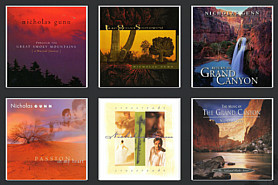 John: Every one of your National Park albums is like a colorful canvas. Each has their own merits, but how would you best describe the sound qualities of your National Park releases?
John: Every one of your National Park albums is like a colorful canvas. Each has their own merits, but how would you best describe the sound qualities of your National Park releases?
Nicholas Gunn: Cinematic is the word that always comes to mind for me. Cinematic music to me is like a soundtrack to be played against experiencing these natural wonders. Over and over again, I have received letters and emails from folks saying “we drove to the South Rim listening to The Music of the Grand Canyon” or “hiked the Appalachian Trail listening to Through the Great Smoky Mountains.”
Like Thirty-One Nights these albums were inspired, in essence, by travel and geographic location. The only difference being that my artist persona somewhat hid behind the National Park theme.
John: In the late 1990’s you founded the Anagram Records Label, and earlier you founded Gemini Sun Records, a label with numerous award-winning artist, many of whom were artists like yourself who made the Top Ten Billboard Charts. Who are some of the artists on the Gemini Sun Record Label under your direction?
Nicholas Gunn: Anagram existed for only around a year or so when I was previously married and it had two other license deals, one with Mars Lasar and one with Loren Gold as well as Cheryl Gunn’s titles and a few of mine as well. When I was divorced, Anagram dissolved and I started Gemini Sun Records. Gemini Sun Records also closed for business in 2009. Both were started as a way to represent artists in the genre of New Age/World Music that was steadily shrinking.
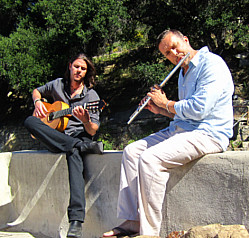 Labels such as Higher Octave, Windham Hill, and Narada were closing or being sold off to the majors as their assets in masters and publishing were the only thing left, sales were dwindling fast! The days of supporting retail such as Natural Wonders and Nature Company were now gone and artists coming off of these closing labels needed a home. Gemini Sun became that home for a select few; David Arkenstone, 2002, Mars Lasar, Medwyn Goodall, through MG Music, Loren Gold, and myself were just a few of the artists it represented!
Labels such as Higher Octave, Windham Hill, and Narada were closing or being sold off to the majors as their assets in masters and publishing were the only thing left, sales were dwindling fast! The days of supporting retail such as Natural Wonders and Nature Company were now gone and artists coming off of these closing labels needed a home. Gemini Sun became that home for a select few; David Arkenstone, 2002, Mars Lasar, Medwyn Goodall, through MG Music, Loren Gold, and myself were just a few of the artists it represented!
John: Would you like to tell us some of the highlights and other aspects, including the drawbacks of owning your own record label?
Nicholas Gunn: In my opinion, it’s a trap in many ways and little positive to talk about. It’s a thankless job that few take on to the degree I did as an artist owned label. I took it on to increase my profitability per sale, to make a difference in a market segment, and to represent great music and artists allowing them to own their own property (masters and publishing). Most artists block the desire to want to know or deal with national distribution, marketing, and promotion – and for good reason! It’s as stressful as hell!
The intricacies of managing the small margins associated with indie national distribution, marketing, and promotion of a niche label within a declining industry, within a declining economy is nothing short of a nightmare! Distributors are set up to protect their bottom line, at all costs! By cross collateralizing all returns, marketing, and promotion against all sales, the music business on this level is nothing more than a consignment business at massive risk to the label. If you couple that with major retailers who fail to comply with retail campaigns but then charge for the advertising they failed to comply with, it’s a fundamentally flawed system that produced the music industry we see and experience today.
John: The entire music industry as a whole has greatly changed over the years since you began producing music. What are some observations you have made over the years, and in what way has the music industry changed, for better or worse?
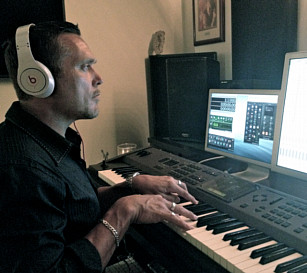 Nicholas Gunn: It’s still finding its way, but for the better! Like any business, it’s all about supply and demand and there is little demand for music sales as it used to exist. Music sales are not the future that I am relatively sure of! The use of music continues to be high, but through streaming, illegal downloading and sharing, and second hand online sales from the massive returns and recycling of the music industry as a whole. It’s all spread very thin at little profit to anyone, including the labels. I think there are a few models to watch, one of which would be the Electronic Dance Music market (EDM).
Nicholas Gunn: It’s still finding its way, but for the better! Like any business, it’s all about supply and demand and there is little demand for music sales as it used to exist. Music sales are not the future that I am relatively sure of! The use of music continues to be high, but through streaming, illegal downloading and sharing, and second hand online sales from the massive returns and recycling of the music industry as a whole. It’s all spread very thin at little profit to anyone, including the labels. I think there are a few models to watch, one of which would be the Electronic Dance Music market (EDM).
This is a model that has been born in the new distribution and profiteering age of music. Here is a platform with which DJ’s are now producing their own content in the studio and performing through the DJ method at low cost and extremely high output. The concept of sales has never been a priority and sharing/remixing within the community is embraced as a way to popularize the genre and its originating artist. The revenues are in packing 100,000 fans into a venue with the requirement the DJ/Producer simply show up with their gear over their shoulder! It’s brilliant!
The top ten DJ/Producers last year collectively made 127 million dollars and stand atop the industry money making leaders. Now, I am not talking about wedding DJ’s, I am talking about talented DJ/Producers – there’s a big difference! Secondly, and this is important I believe, we need to realize that music, especially in recorded form, is now highly dispensable and transferable. A great song, performance, and recording is still just that, great! It will always be consumed, but the real question becomes what will be the support mechanism that will allow for the creation and performance of this content?
Successful artists have a somewhat self-sustaining system, however how does a new unsigned artist become self-sustaining? I believe we are reverting back to the times when art was supported by benefactors and leaders within both business and government. Companies need art to further define and align their products within the marketplace, and leaders of countries will continue to require education and culture in arts to further the human race. It’s now about selling your talent to a group that needs your involvement to further its own cause, that’s how I see it.
 John: Can you foresee any trends developing that may influence your work and perhaps the work of other artists as a whole?
John: Can you foresee any trends developing that may influence your work and perhaps the work of other artists as a whole?
Nicholas Gunn: Quite frankly, this is my last album in the genre for the foreseeable future. I have a great passion for all music and the music business itself and I find the trend of developing more instrumental music within the current instrumental market place quite frustrating and stifling. There really are no venues that support the live performance of this genre and sales are at an all-time low. It’s a testament to my love of the genre that has produced Thirty-One Nights. I wanted to have an album I personally could be really proud of as my departure album.
On the side over the years I have produced my fair share of EDM as it does tend to border on instrumental at times. I have partnered with artist/vocalist Carmen Rainier and we have a project in the works titled (We Are) Nexus. It’s refreshing and invigorating to be a part of a larger and emerging music community that fully embraces the future of the music business. I am a musician and producer first and foremost and I got into this business for my work to be heard. This is the next chapter of my musical career.
John: I heard Thirty-One Nights is on the upcoming nomination ballot for Best New Age Album in the 55th GRAMMY® Awards on Feb. 10, 2013.You will know if nominated on December 5, 2012 isn’t that right, and is there any manner in which Nicholas Gunn fans can support your nomination for a possible music award?
Nicholas Gunn: Actually, it is on the ballot for Best World Music Album which I believe is more appropriate for the album itself. Yes, December 5th is when I will know if Thirty-One Nights receives a nomination. The award is really a peer recognition process of which fans have little part in unless they are a voting member of the academy. All I can say is that after 14 albums, two million sales, and 55 consecutive weeks on the Billboard chart it would be nice to be recognized by my peers; however it will not change the way I go about developing the next chapter of my musical career.
John: Naturally a GRAMMY® Award would put you in the spotlight as an artist, but aside from your own talents as a musician, what external factors have been the greatest influences to your success?
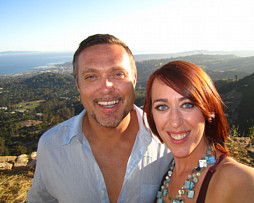 Nicholas Gunn: I would say it’s in taking the risk of wearing all these hats over the years as an artist, writer, producer, engineer, label owner. They all make up for my experience in the business and how I now see the business. Granted, closing my label was an awful experience but liberating and defining all at the same moment. Every passionate path is littered with debris of some sorts and it’s having those experiences that have given me a greater understanding of what I want and what I don’t want. I believe my most successful days lie ahead of me because of this.
Nicholas Gunn: I would say it’s in taking the risk of wearing all these hats over the years as an artist, writer, producer, engineer, label owner. They all make up for my experience in the business and how I now see the business. Granted, closing my label was an awful experience but liberating and defining all at the same moment. Every passionate path is littered with debris of some sorts and it’s having those experiences that have given me a greater understanding of what I want and what I don’t want. I believe my most successful days lie ahead of me because of this.
John: During your career you have contributed money to the National Park organization, American Lung Association, plus you are on the board of directors for the Children’s Creative Project (CCP), in Santa Barbara, California. Clearly the arts and music education for children and other charitable organizations are important to you. Would you like to tell us about your Philanthropy work, and why it is important to you on a personal level?
Nicholas Gunn: Arts and education for children is paramount. I am a result of parents and a system that exposed me to a finer education in art and music. As a society, we tend to embrace mediocrity as a way to shy away from having to learn more about something, it’s an innate human trait. I sit on the board for the Children’s Creative Project because it grants much needed funding for events that expose children to fine art. It’s simply a matter of proper exposure. We become mediocre when we get older, but we are not that way as children. We learn what we are taught and we soak it all up, no matter which way it comes at us early in life. Real Music initiated the donation to The Grand Canyon Association from sales of The Music of the Grand Canyon.
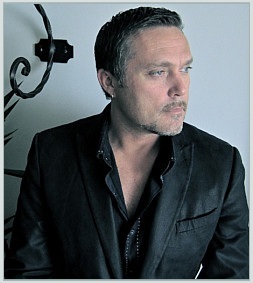 It was and still is a wonderful cause as the money promotes education and awareness of preservation to both children and adults. This trend carried forth for me through realizing it’s important to give back in this manner. Money is cyclical. You have to give as much as you receive.
It was and still is a wonderful cause as the money promotes education and awareness of preservation to both children and adults. This trend carried forth for me through realizing it’s important to give back in this manner. Money is cyclical. You have to give as much as you receive.
John: I would love to release some Nicholas Gunn news about a new project or a concert tour in the planning stages. Is there any additional news you would like to officially announce today?
Nicholas Gunn: I am sorry to say I think the biggest news might be found in my departure from the genre for the foreseeable future. But on a positive note, I have much to give and much to share, only within a different genre. I recently launched a new current events news page at NicholasGunn.com/News. I recommend everyone visit to see what’s new there!
John: Nicholas you are a legendary instrumental artist, regardless of genre or classification, and that my friend will never change! Needless to say I trust we will have a chance to interview again in the future. In closing for now, I want to thank you again for giving everyone this opportunity to find out the latest news about you, and your newest project with Dana Kemmerle and Chris Fossek. Is there anything you would like to say before we close, or express to the fans that have supported you over the course of your career?
Nicholas Gunn: I do want to thank, from the bottom of my heart, the valued fans that have supported me over the years. For passionate people such as you John that still see the value and potential in this beautiful genre of music. There are so many people really, over the years, that have helped me realize my goals, and of course I thank them all. I am eternally grateful.
For more information visit NicholasGunn.com. Sample or purchase albums and songs at the Nicholas Gunn music shop. Find details like the making of Thirty-One Nights, info about Dana and Chris, and visit Nicholas at social sites like Facebook. You can also find albums at major online music stores, including the artist page for Nicholas Gunn at Amazon.com. Interview photos are courtesy nicholasgunn.com & Big Stock Photo – Ardith.
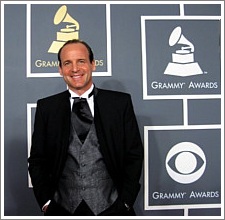 Pre-release Album Review: The Maiden of Stonehenge by three times GRAMMY® Nominee Dr. Michael Brant DeMaria.
Pre-release Album Review: The Maiden of Stonehenge by three times GRAMMY® Nominee Dr. Michael Brant DeMaria.
Award-winning Michael Brant DeMaria is a three times GRAMMY® Nominated recording artist, psychologist, author and speaker with a dramatic new soundtrack album for 2012. Four years in the making, The Maiden of Stonehenge is a musical soundtrack to an original theatrical play of the same title co-written by Michael DeMaria and Stephen C. Lott.
Michael DeMaria is an esteemed artist in the new age music community, and like all of his arrangements, The Maiden of Stonehenge is both a significant release and highly anticipated new album in 2012.
Michael DeMaria’s three GRAMMY® Nominations for Best New Age Album of the Year, Bindu, Gaia, Ocean & Siyotanka each have risen to the top #1 position on Zone Music Reporter’s Radio Charts in the New Age Albums category.
Extensive worldwide radio coverage of his four releases in the Ontos Healing Sound Project at XM/Sirius Radio, Soundscape Cable, Satellite and internet radio stations has led to numerous Zone Music Reporter’s Best Album Awards.
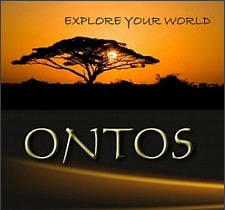 First in the Ontos Healing Sound Project Siyotanka won a Native American Music Award and earned a GRAMMY® Nomination in the Best Native American Music Album category, and won ZMR’s Best Native American Album in 2009.
First in the Ontos Healing Sound Project Siyotanka won a Native American Music Award and earned a GRAMMY® Nomination in the Best Native American Music Album category, and won ZMR’s Best Native American Album in 2009.
Second in series Ocean won Zone Music Reporter awards in two categories of Best Ambient Album of 2009 and Best Relaxation/Meditation Album of 2009. Gaia likewise was awarded in the two categories of Zone Music Reporter’s Album of the Year and Best World Album. Earlier in 2012, Michael Brant DeMaria’s fourth in the Ontos Healing Sound Project series Bindu debuted at #1 and remained on ZMR’s New Age Radio Chart for two months in a row.
The Maiden of Stonehenge is the most elaborate musical odyssey Michael Brant DeMaria has brought to life yet. Familiar with every one of his releases, Michael’s new album for 2012 will surprise anyone acquainted with his earlier arrangements. The soundtrack recording wonderfully illustrates the story based theme for a musical journey centered on the life and adventures of an young orphan girl in ancient Britain as she finds her way to the ancient Circle of Stones.
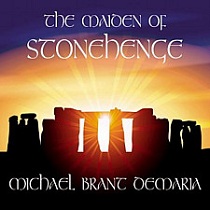 Although Michael performs on a number of ethnic flutes, keyboards, and synthesizers like earlier releases, listening to his newest album was truly a revelation since each song is conveyed in unique fashion to all other songs from previous albums. For the first time vocals are uniquely integrated into a number of songs by Michael, and of lead vocalist Maggie Crain on the songs Chantress & Stonehenge.
Although Michael performs on a number of ethnic flutes, keyboards, and synthesizers like earlier releases, listening to his newest album was truly a revelation since each song is conveyed in unique fashion to all other songs from previous albums. For the first time vocals are uniquely integrated into a number of songs by Michael, and of lead vocalist Maggie Crain on the songs Chantress & Stonehenge.
Beginning with the deeply mysterious first overture Lost Village to the harmonious conclusion in the final song Stonehenge, each scene is crafted to reveal a vivid musical adventure. Inside the audio CD album, cover notes give the setting to each of the 13 songs that enable the listener to follow the storyline.
The Sounds True record label is another store where you can find the two albums In The Flow & Solace. Both albums are designed for patient therapy and emotional well-being in his professional role as a Music Therapist. The Maiden of Stonehenge is the most impressive album to compliment the long linage of award-winning albums by new age, instrumental and world music recording artist Michael Brant DeMaria.
Visit Michael Brant DeMaria’s Ontos.org music section to sample and purchase his albums, or visit the store page for Michael DeMaria at Amazon.com, CDBaby and iTunes. The Maiden of Stonehenge is a pre-release currently available at major online stores prior to the official release date of winter 2012-2013. Photos and cover artwork are courtesy ontos.org.
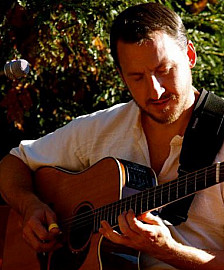 World Fusion Album Review: New Music by Todd Boston.
World Fusion Album Review: New Music by Todd Boston.
If you happen to be in the mood for summertime songs with an impressive blend of instrumental world fusion music, acoustic guitarist Todd Boston has a brand new 2012 multicultural follow-up to his 2010 release Alive. In close balance with Alive by flowing acoustic guitar and percussion melodies, Touched by the Sun heralds in a noticeable international, world fusion blend of Eastern and Western music.
Todd Boston is a brilliant guitarist, and multi-instrumentalist performing international tours in 2012, as a soloist and in a number of ensembles including a tour with the world renowned American singing songwriter Snatam Kaur.
After my interview with Will Ackerman last week, I have to say it is by coincidence that tomorrow on (July 20, 2012) Will Ackerman will be among other musicians at a concert celebration for Todd Boston’s Touched By the Sun album. This special concert event will be in Mill Valley, California at the Throckmorton Theatre.
The concert artists in attendance with Todd Boston to help celebrate the launch of Touched by the Sun are guest artist Will Ackerman on guitar, and other top ranked instrumentalist and vocalist.
Most are award-winning artists, and several are artists who have been featured at this site. They include vocalist Snatam Kaur, GRAMMY® nominated bass guitarist Michael Manring, percussionist Ramesh Kannan, cellist Matthew Schoening, violinist Emily Palen, trumpet and flugelhorn specialist Jeff Oster, and guitarist Shambhu.
Touched by the Sun studio album, which has 12 great world fusion melodies, is a refined instrumental with vocals album, likewise comprised of an impressive team of music professionals. Many of whom you are sure to recognize. There are a number of studio session artists who often provide instrumentals on Will Ackerman productions at Imaginary Road Studios, so the contributing members are indeed a select group of musicians.
Artists on the studio album joining Todd Boston on guitars, dotar, flutes and base are female vocalist Snatam Kaur, cellist Eugene Friesen, violinist Charlie Bisharat, percussionist Jeff Haynes, drums Aaron Sterling, bass guitar Tony Levin, fretless bass Michael Manring, hand clapping Tom Eaton, whispers Tina Malia and Ramesh Kannan on tabla and cajon.
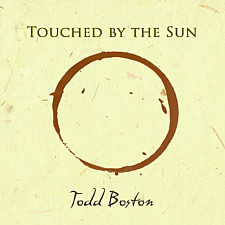 There are other strategic elements about Touched by the Sun that isn’t by chance. Given the fact that Todd Boston is a great performer, and the quality of artisanship delivered by other top-ranked artists, this new Imaginary Road Studios production has every component needed to reach the upper limits of success. Stated more precisely, I expect Touched by the Sun to be an award-winning album in 2013.
There are other strategic elements about Touched by the Sun that isn’t by chance. Given the fact that Todd Boston is a great performer, and the quality of artisanship delivered by other top-ranked artists, this new Imaginary Road Studios production has every component needed to reach the upper limits of success. Stated more precisely, I expect Touched by the Sun to be an award-winning album in 2013.
Touched by the Sun made the #1 Top Recording for June 2012, with the Top 10 & Top 100 Radio Airplay Charts at Zone Music Reporter. The Brightest Night is a song by Todd that has made its way into the elite 22 artist and 22 instrumental song compilation album in 2012 by Will Ackerman entitled The Gathering.
Once more, Touched by the Sun was created in the care of GRAMMY® Award-winning producer Will Ackerman, and co-producer Tom Eaton and Todd Boston, so every component of Todd’s album was given the attention it deserves by a team of specialists. Comprised of elements that make a great recording, decisive actions taken by Todd Boston has lessened the mystery of whether this is a quality album or not. The question now is where to sample or purchase Touched by the Sun.
Visit the homepage of ToddBoston.com and visit Todd Boston’s music page, where you can sample or purchase at several popular online music stores including Amazon, CDBaby, and iTunes. Cover artwork & photo courtesy toddboston.com.

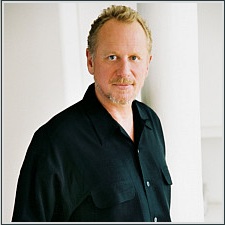 Best Instrumental Songs Review: The Gathering by Will Ackerman.
Best Instrumental Songs Review: The Gathering by Will Ackerman.
When deciding on a review title for Will Ackerman’s collection of contemporary instrumental songs, the first caption that came to mind involved the word best. There are several reasons why I gave The Gathering a desirable best instrumental song collection title, and I am prepared to give the reasons why. Synonymous with quality music, the name Will Ackerman alone seems to shout excellence! This is apparent, whether it is his own music recording, or one of the 20 plus gold and platinum albums he produced throughout his 35 year professional career.
The Gathering is the newest 2012 instrumental music compilation album from the acclaimed, GRAMMY® Award winning guitarist and producer Will Ackerman. Featuring an exclusive music collection of 22 top-quality songs by 22 great artists, The Gathering is a decisive who’s who of the best quality artists Will Ackerman selected for this release, out of the many fine musicians who had their album produced at his state-of-the-art Imaginary Road Studios.
Will Ackerman is famous worldwide for his production talents as founder Windham Hill Records, and his strong influence in the instrumental music recording industry yesteryear and today. In addition to his role as producer, Will Ackerman is an award-winning composer and guitarist, having performed a vital role in launching the careers of many award-winning artists. Over the past 35 years Will Ackerman has produced albums for over eighty four artists. Some of the most notable artists are Alex de Grassi, Michael Hedges, Michael Manring, Shadowfax, Liz Story and George Winston.
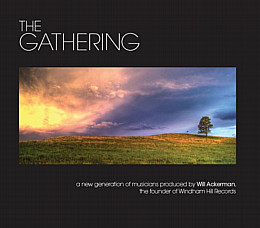 The Gathering by Will Ackerman is an excellent compilation album with 22 of the best contemporary instrumental songs on Will Ackerman’s West River Records label. Famous for founding Windham Hill Records, the legacy of the highest quality artists endures on Will Ackerman’s West River Records label.
The Gathering by Will Ackerman is an excellent compilation album with 22 of the best contemporary instrumental songs on Will Ackerman’s West River Records label. Famous for founding Windham Hill Records, the legacy of the highest quality artists endures on Will Ackerman’s West River Records label.
The Imaginary Road Studio today engages the expertise of producer and engineer Tom Eaton. Taking the high road in quality studio productions, William Ackerman and Tom Eaton’s expertize help artists embolden their music compositions with grace, elegance and imagination.
Visit WilliamAckerman.com and the Imaginary Road Studios. You can sample or purchase The Gathering at CDBaby.com. Listed below are the 22 artists and 22 song credits for The Gathering 2012 compilation release.
There are a number of new age and contemporary instrumental artists whose music I have reviewed over the years. The 13 artists with album reviews at this site are listed first in the credits. Photos courtesy willackerman.com.
The Gathering Credits – 22 Artists and 22 songs:
1. Ann Sweeten song Dawn on Red Mountain, from Grey Sky And Bittersweet album.
2. Devin Rice & Erin Aas song Thyn Ayre, from The Arrival album.
3. Fiona Joy Hawkins song Feeling Sunshine, from Live At The Q album.
4. Jeff Oster song Serengeti, from True album.
5. Kathryn Kaye song Mountain Laurel, from Heavy as a Feather album.
6. Kori Linae Carothers song Carpe Diem, from Trillium album.
7. Lawrence Blatt song The Color of Sunshine, from The Color of Sunshine album.
8. Masako song Glastenbury, Vermont, from Masako album.
9. Paul Jensen song Taoist Winds, from The Other Side album.
10. Peter Jennison song Anthem, from Longing From Home album.
11. Shambhu song Hide and Seek, from Sacred Love album.
12. Todd Boston song The Brightest Night, from Touched by the Sun album.
13. Will Ackerman song The Wheel, from New England Roads album.
14. Dean Boland song Intimacy, from Soul Whispers album.
15. Denise Young song Livia’s Song, from Something You Dream Of album.
16. Frank Smith song Porch with a View, from Earth Spring album.
17. Ken Verheecke song Forever, from A Place Called Home album.
18. Patrick Gorman song Shades of You, from Chasing Tornados album.
19. Rhonnda Cadle song Shalom, from Will’s Embrace album.
20. Rocky Fretz song Kim’s Song, from The Path Ahead album.
21. Rudy Perrone song The Prophet, from The Language Of Spirits album.
22. Stanton Lanier song Bread of Angels, from A Thousand Years album.
 Award-winning producer Will Ackerman has released a new compilation CD featuring great songs by some of the best artists today. They are an elite group of instrumental artists who enlisted Will Ackerman to produce their albums at his Imaginary Road Studio.
Award-winning producer Will Ackerman has released a new compilation CD featuring great songs by some of the best artists today. They are an elite group of instrumental artists who enlisted Will Ackerman to produce their albums at his Imaginary Road Studio.
The Gathering is a compilation album of 22 songs on Will Ackerman’s West River Records label. I plan to write a review for The Gathering once I receive the new compilation CD, but I can tell you a little about this release right now since I have already reviewed many of the complete albums in the song list. In the future I will be reviewing more artist’s with albums produced by Will Ackerman at Imaginary Road Studio.
The Gathering is a “best of the best album” since many of the songs selected by Will Ackerman are designated songs from a number of best albums, composed by top-ranked artists in the music recording industry. Famous for the highest quality in music productions, the tradition continues on Will Ackerman’s West River Records label. The artists with reviews at this site, and whose songs are in The Gathering are shown below.
Visit WilliamAckerman.com and find more about these select artists, and purchase The Gathering at CDBaby.com.
Ann Sweeten song Dawn on Red Mountain, from Grey Sky And Bittersweet album.
Devin Rice & Erin Aas song Thyn Ayre, from The Arrival album.
Fiona Joy Hawkins song Feeling Sunshine, from Live At The Q album.
Jeff Oster song Serengeti, from True album.
Kathryn Kaye song Mountain Laurel, from Heavy as a Feather album.
Kori Linae Carothers song Carpe Diem, from Trillium album.
Lawrence Blatt song The Color of Sunshine, from The Color of Sunshine album.
Masako song Glastenbury, Vermont, from Masako album.
Paul Jensen song Taoist Winds, from The Other Side album.
Peter Jennison song Anthem, from Longing From Home album.
Shambhu song Hide and Seek, from Sacred Love album.
Todd Boston song The Brightest Night, from Touched by the Sun album.
Will Ackerman song The Wheel, from New England Roads album.
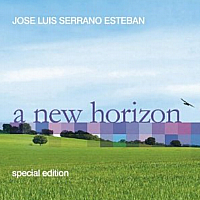 A New Horizon – Special Edition by José Luis Serrano Esteban.
A New Horizon – Special Edition by José Luis Serrano Esteban.
José Luis Serrano Esteban, a new age guitarist from Spain, is enjoying time at the Top 10 Zone Music Reporter Radio Chart the past couple of months. Esteban is off to a great start with his release titled A New Horizon (Special Edition), which has held ZMR’s #2 Top 10 Radio Chart position during January and February of 2012.
José Luis Serrano Esteban is a composer and multi-instrumentalist who studied classical guitar and electronic music. Esteban is skilled on a number of instruments including piano, keyboards, percussion instruments and programming, but guitar appears to be his specialty, performing on Spanish classical guitar, acoustic, 12 string, and a collection of different acoustic and electric guitars.
Esteban has released over 100 music compositions, each in a wide variety of styles that range from classical, electronic, new age, world and rock music.
Along with his own cinematic recordings, Esteban is a guitar and electronic specialist in other artist’s CD recordings and audio video scores too, composing music for commercials, demo tapes, and soundtrack scores for television documentaries. José Luis Serrano Esteban is the second Spanish composer who has signed with Landscape TV, an audio visual media station in the UK called Landscape HD productions. His first New Age Musica video was released in 2011.
A New Horizon (Special Edition) is an adventurous blend of classical and electronic rock music with several songs in near representation style to iconic band Tangerine Dream.
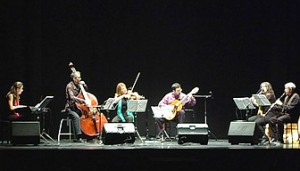 The re-issue of A New Horizon (Special Edition) has 16 songs, two of which are new bonus tracks. Nearly touching a dream & Vida (Life) have a pleasant atmosphere and pleasing feel of warmth, like the consistent qualities you will experience on the entire album.
The re-issue of A New Horizon (Special Edition) has 16 songs, two of which are new bonus tracks. Nearly touching a dream & Vida (Life) have a pleasant atmosphere and pleasing feel of warmth, like the consistent qualities you will experience on the entire album.
The essentials of José Luis Serrano Esteban’s music with composing, producing and recording A New Horizon (Special Edition) himself is the likeness of refined recording of songs with near qualities of what you hear on many of Will Ackerman productions.
Esteban has a natural ability for pairing electronic and acoustic guitar with violin, piano and flute into serene instrumental songs. Together he and the additional artists from Spain have reintroduced a picturesque landscape across a new horizon.
On A New Horizon (Special Edition), some pieces were performed with instrumentalists Nacho Serrano (Bass and 12 string acoustic guitars), Cristobal Caballero (double bass), Nuria Felix (violin), Santiago Puente (clarinet), Gloria Esteban (flute), Carlos Calvo (flute) and Covadonga Serrano (piano).
Visit JlseMusic.com to sample or purchase and find at his Amazon.com page. Cover artwork courtesy jlsemusic.com.
 Dr. Michael Brant DeMaria is a 54th GRAMMY® Awards Nominee in the Best New Age Album category this year, scheduled for Sunday, Feb. 12, 2012. Nominated for his Gaia album, Michael is also a new age artist with a continuous mission.
Dr. Michael Brant DeMaria is a 54th GRAMMY® Awards Nominee in the Best New Age Album category this year, scheduled for Sunday, Feb. 12, 2012. Nominated for his Gaia album, Michael is also a new age artist with a continuous mission.
For the past 30 years as an integrative psychotherapist, Michael has committed much of his life helping people resolve their personal issues.
Bindu is the brand new 2012 release from Michael Brant DeMaria, who is a top ranked new age artist in his own right. The first release in his Ontos Healing Sound Project is The River, which led to his GRAMMY® Nominated healing/meditation release Ocean.
Remaining the number 1 album for 3 months on Zone Music Reporter’s top 100 monthly charts, Ocean ended the year 2009 achieving ZMR’s Best Ambient & Best Relaxation Album Awards.
GRAMMY® Nominated in 2012, Gaia has a graceful vibrancy that gently renews the inner spirit. Gaia is comparable to The River & Ocean, but the innovative world music inspirations found in Gaia heighten the emotional sensations of calm, and ascertains our undeniable connection with planet earth. Many may remember in 2010, Gaia achieved Album Of The Year & Best World Album in Zone Music Reporter’s Music Awards.
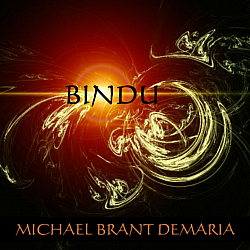 Bindu is a wellness driven musical experience from the directive of four time GRAMMY® Nominee Dr. Michael Brant DeMaria, who is conceivably the most accomplished artist in the field of relaxation/meditation music today.
Bindu is a wellness driven musical experience from the directive of four time GRAMMY® Nominee Dr. Michael Brant DeMaria, who is conceivably the most accomplished artist in the field of relaxation/meditation music today.
Fourth in his popular Healing Sound Project, the serenity of Michael’s performance on Bindu reaches the pinnacle of healing music, this time turning his focus inward on the identity of oneself, and the identity of one another.
Michael Brant DeMaria as a professional caregiver has supported others by guiding them through some of life’s most challenging situations. And so by this directive, Michael transforms his capacities as a healthcare professional into therapeutic music designed to help people manage life’s challenges.
Bindu is another exceptional new album with award winning potential, but only time will tell if Bindu will secure his fifth nomination in 2013, and if Gaia will achieve GRAMMY® Award status in 2012.
Michael’s firsthand experience as both a professional caregiver and top award nominee in 2012 has placed him in a unique position by becoming a benefactor on one hand, and a potential beneficiary on another.
Visit ontos.com homepage and sample or purchase at his music store page or Amazon.com page. Read our interview and album reviews on my page dedicated to Michael Brant DeMaria. Photo images courtesy Michael Brant DeMaria.
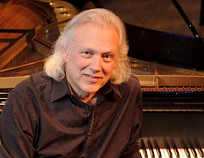 David Lanz is a GRAMMY® Nominated new age pianist getting more recognition with a little help from his friends on a new release with an almost certain destiny to become a radio chart topping release in 2010.
David Lanz is a GRAMMY® Nominated new age pianist getting more recognition with a little help from his friends on a new release with an almost certain destiny to become a radio chart topping release in 2010.
Pianist David Lanz has reunited with longtime friend and flutist Gary Stroutsos and cellist Walter Gray to form The Liverpool Trio, in a special instrumental tribute release of the greatest iconic band of all time.
Liverpool: Re-Imagining The Beatles by David Lanz & The Liverpool Trio is the release many people are talking and writing about at present including yours truly.
This release is more than just a name tribute to the fabulous four Beatles and is quite special by the respected musicians comprising this instrumental album with Lanz delivering his admired by many piano presentations.
David Lanz is easily remembered for his 1988 album Cristofori’s Dream release which remained at the top, number 1 position on Billboard’s Adult Alternative/New Age chart for 27 consecutive weeks and went platinum, establishing his position as a top New Age Solo Pianist. In addition to several decades in recording work, GRAMMY® Nominated Lanz is also a concert pianist with appearances scheduled at many venues around the country.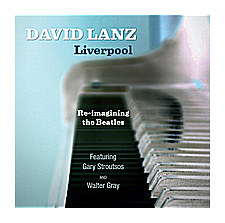
While The Liverpool Trio is comprised of David Lanz, Gary Stroutsos, and Walter Gray, brother Gary Lanz co-produced this release featuring Keith Lowe on bass, Eric Eagle drums, David Revelli percussion, Larry Knechtel Hammond, Alonzo Davideo guitar, James Reynolds synthesizer and Richard Olivier on vocals.
Liverpool: Re-Imagining The Beatles is based on the original song compositions of John Lennon & Paul McCartney and a new release that takes you back to the memorable Liverpool England of yesterday where John, Paul, George and Ringo were born. While most are lesser known songs by design, songs like Norwegian Wood & Yes It Is are included in this fantastic release that becomes your ticket to ride during your modern times musical tour of The Beatles.
The YouTube video of Yes It Is featured below shows you wonderful images of The Liverpool Trio performance. You can discover more on their YouTube video Interview Presentation with David Lanz & Gary Stroutsos. The video gives their personal reflections and the creativity that went into on this production.
Visit DavidLanz.com for more information and to sample or purchase the Liverpool album. Photo courtesy davidlanz.com.
In the millennium before the nation of America was founded and a new way of life was envisioned, Native Americans lived brave and free throughout the land. History tells of the conflict and injustice imposed upon indigenous people thought to be hindering this new way of life, but in fact Native Americans were already living the proverbial American dream in sacred lands they viewed as paradise.
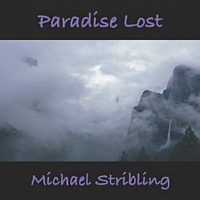 Michael Stribling has released an album to commemorate the past while honoring every Native American who lived and died protecting their sacred homeland. To me, Michael’s dedication struck a familiar chord concerning our present values and the high price we pay to keep the diverse ethnicities comprising the America of today free.
Michael Stribling has released an album to commemorate the past while honoring every Native American who lived and died protecting their sacred homeland. To me, Michael’s dedication struck a familiar chord concerning our present values and the high price we pay to keep the diverse ethnicities comprising the America of today free.
Paradise Lost is Michael’s seventh in an enduring lineage of New Age Electronic albums making an impact in the genre, winning awards and universal acclaim during his years as an accredited musician producing outstanding ambient music. His electronic discography like recent The Promise which dealt with life transitions is indeed a success and in my role as review publicist, quickly identified his exemplary artistry in the first few measures, so Paradise Lost is not worlds apart from earlier albums, but is clearly a monumental one as those familiar with his music would agree.
Paradise Lost has 12 symbolic songs defined by three movements and while retracing the ancestral life experiences of Native Americans, the perspective I determined from this viewpoint ranged from total relaxation to energetic, so you will find Paradise Lost is not gloomy or somber and I felt more epic in nature. Another point worthy of mention knowing this album recounts the Native American experience, conceptual electronic orchestrations are the expressive medium given during this rendition so a harmonious contrast to more traditional depictions by wood flutes, chanting or bass drums.
Prairie Dawn is first of 5 songs to reveal a distant gaze upon the clear majestic landscape and of people living during this historic period, now emerging with a more ambient view of tribal culture where spacious orchestrations echo the expansive lands of our past.
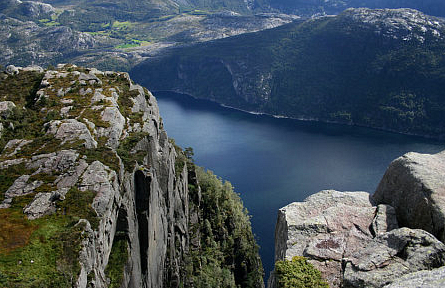 French horn heralds in Guardian of the Plains, then strings become like strands of wheat gently moving in the breeze while flute sets the melody upward in flight during Forest Heart. Synthesizer projects an airy windswept Eagle Above, River Below, then growing excitement and tempo ensues while racing among the scenic timberlands in Hunting Party.
French horn heralds in Guardian of the Plains, then strings become like strands of wheat gently moving in the breeze while flute sets the melody upward in flight during Forest Heart. Synthesizer projects an airy windswept Eagle Above, River Below, then growing excitement and tempo ensues while racing among the scenic timberlands in Hunting Party.
March of Destiny is first of 3 songs to reference the battle over territorial supremacy and true to song title, a crisp drum cadence is timed in lock step rhythm to a salutary march across the open wilderness. Horns make a melodic call to arms to a swirling crosswind of mystery surrounding the ambient Approaching Storm with blended electric guitar strides. In Vision Quest a drifting cloud of haziness finds origins by long extended atmospheric notes.
Paradise Lost ( Title Song ) is first of the final 4 songs to represent the loss of humanity and prized territories, shown by contrasting synthesizer runs, an elevated prominence boldly reaches an ascending summit while heightening the majestic image this project in entirety symbolizes. Lament for the Land is more tributary by a solemn narrative that is likened to the soulful Hymn for the Fallen.
Return to the Spirit World is a song telling of a higher perspective during Michael’s closing adaptation, and while entering into an ever rising plateau of instrumental ambiance, each expansive layer also finds equable ground for every note to build a foundation upon, coinciding with the present unified territories everyone observes today from every corner pointing North and South, East and West.
Visit the leela-music.com website to sample or purchase at his CDBaby.com page and visit Michael where he hosts a free online radio program at leela-radio.com website and my pages dedicated to Michael Stribling.
Cover art copyright Michael Stribling – Picture copyright Big Stock Photo – ta_samaya.
NewAgeMusicWorld.Com & NewAgeMusic.nu ZMR Qualifying artists. Albums shown in alphabetical order.
The click on Word Links are [ Website ] & [ Review ] for each artist listed below.
David Mauk / davidmauk.com [ website ] 12 Months Album [ review ]
David Wahler / davidwahler.com [ website ] Antiquus Album [ review ]
Fiona Joy Hawkins / fionajoyhawkins.com [ website ] Blue Dream Album [ review ]
Arturo Mayorga / arturomayorga.com [ website ] Cascades Album [ review ]
9 Muses / Sample at cdbaby.com [ here ] Feel to Heal Album [ review ]
Ciro Hurtado / cirohurtado.com [ website ] Guitarrista Album [ review ]
Paul Avgerinos / roundskymusic.com [ website ] Love Album [ review ]
Bruce Mitchell & Ron Korb. newearthgoddess.net [ website ] Album [ review ]
Christopher Boscole / christopherboscole.com [ website ] Presents of Angels [ review ]
Christopher Boscole / christopherboscole.com [ website ] O Christmas Tree.
Michael Brant DeMaria / ontos.org [ website ] Ocean Album [ review ]
Michael Brant DeMaria / ontos.org [ website ] Siyotanka Album [ pages ]
Matthew Labarge / matthewlabarge.com [ website ] October Album [ review ]
Terri Liles Mason / omgaiamusic.com [ website ] Om Gaia Album [ review ]
Cadence Spalding / cadencespalding.com [ website ] Save The World Album [ review ]
Anewday / anewday.ca [ website ] Summer Reflections Album [ review ]
Lawrence Blatt / lawrenceblatt.com [ website ] The Color of Sunshine Album [ review ]
Nick Farr / nickfarr.com [ website ] The Ever Present Now Album [ review ]
John Adorney / johnadorney.com [ website ] The Fountain Album [ review ]
Paul Jensen / juancarlosproductions.com [ website ] The Other Side Album [ review ]
Michael Stribling / leela-music.com [ website ] The Promise Album [ review ]
Kori Linae Carothers / koritunes.com [ website ] Trillium Album [ review ]
Arturo Mayorga is recognized as a dancing pianist but don’t get me wrong, Arturo does not literally dance while playing piano. However if he were to attempt this feat, I am certain it would be as graceful and dignified as what I have heard in his first classic New Age piano CD.
 Equal to his talents as a composing musician, Arturo Mayorga is nationally ranked in the competitive sport of Ballroom dancing, where Waltz, Tango, and Swing are scrutinized before watchful judges who watch for the accepted criteria of a dancing couple locked hand in hand. Now with a concert piano as his partner, Cascades embraces the identical movements found in classical dance by having a choreography timed with proper speed, motion, and balance.
Equal to his talents as a composing musician, Arturo Mayorga is nationally ranked in the competitive sport of Ballroom dancing, where Waltz, Tango, and Swing are scrutinized before watchful judges who watch for the accepted criteria of a dancing couple locked hand in hand. Now with a concert piano as his partner, Cascades embraces the identical movements found in classical dance by having a choreography timed with proper speed, motion, and balance.
Like so many musicians, a parent’s considerate gift of a musical instrument at an early age is what began his interest in music. Arturo states that it was at this early age that he realized the impact of what one person playing an instrument could have on another. Arturo continued music through high school then college. His scholastic studies were in math and science, but composing music was also on his mind so he started the framework songs for the Cascades album during this time period. While judging this CD for myself, I found the 10 classic piano songs of varying moods left me feeling they were a personal revelation of his emotional thoughts put to music.
Cascades begins with first song Sunrise. This mid tempo piano and violin duet sets the standard for a graceful heartfelt ballet, where each timed movement is balanced by the piano melody considering violin takes a second seat by following the lead. There is much emotional content since a melancholy feel is present, lending to a touch of sadness, yet adding character and definition, leaving a beautiful image of what you have just heard in your mind.
While judging this debut album for myself, I found the 10 classic piano songs of varying moods left me feeling they were a personal revelation of his emotional thoughts put to music.
 The Last Night of Winter aligns well with the piano’s duo partner in allowing violin to take the lead in portion of the melody during this faster paced song, where full 360 degree rotational dance pivots, and those brief stationary pauses always see during pivot turns, can be pictured in your mind if you try.
The Last Night of Winter aligns well with the piano’s duo partner in allowing violin to take the lead in portion of the melody during this faster paced song, where full 360 degree rotational dance pivots, and those brief stationary pauses always see during pivot turns, can be pictured in your mind if you try.
The title song Cascades is a true champion in freestyle, where a faster tempo piano promenades with every rise and fall in piano key note steps, reaching the full height in posture, rhythm, and speed.
Violin notes then connects with the melody posturing in a more formal manner while piano strokes sweep along the keyboard at a dizzying pace. The positive upbeat piano movements seem to sweep you off your feet at critical moments, leaving you breathless at the finish.
Arturo is successful at engraving a full range of emotional content and movement into his classic orchestra style music. Cascades is a wonderful piano and instrumental album with beautiful rhythm.
Knowing Arturo Mayorga’s background in dance, one can easily imagine themselves sitting in the audience watching him in motion while listening to his music. From where I happen to be sitting, Arturo appears to be a winner.
Visit the dancing pianist dressed in black at ArturoMayorga.com and his music store digstation.com.
Cover art courtesy of arturomayorga.com – Photo copyright Big Stock Photo – aysarts.
